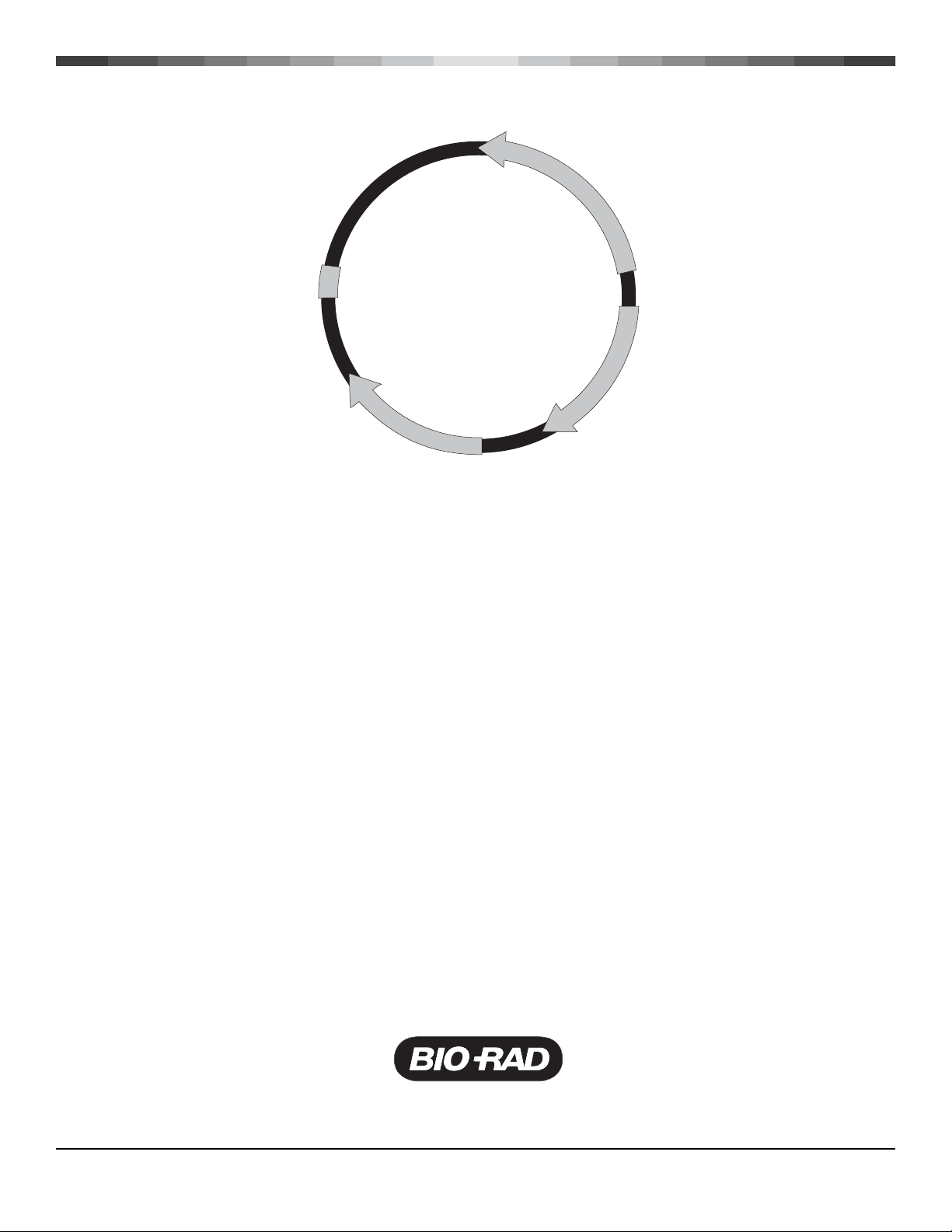
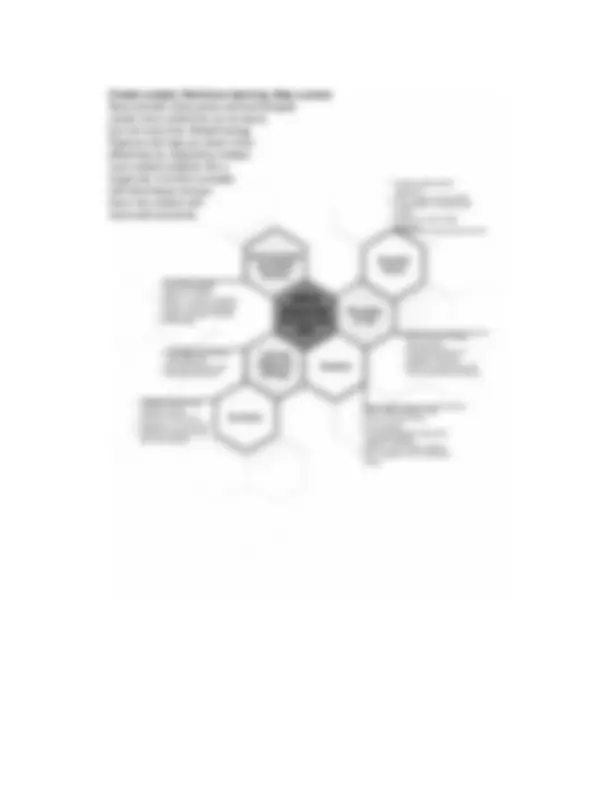

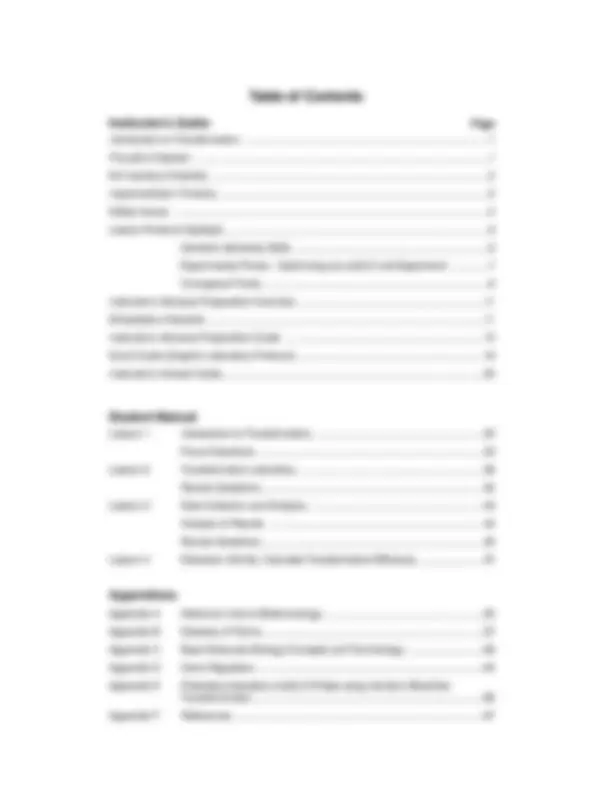
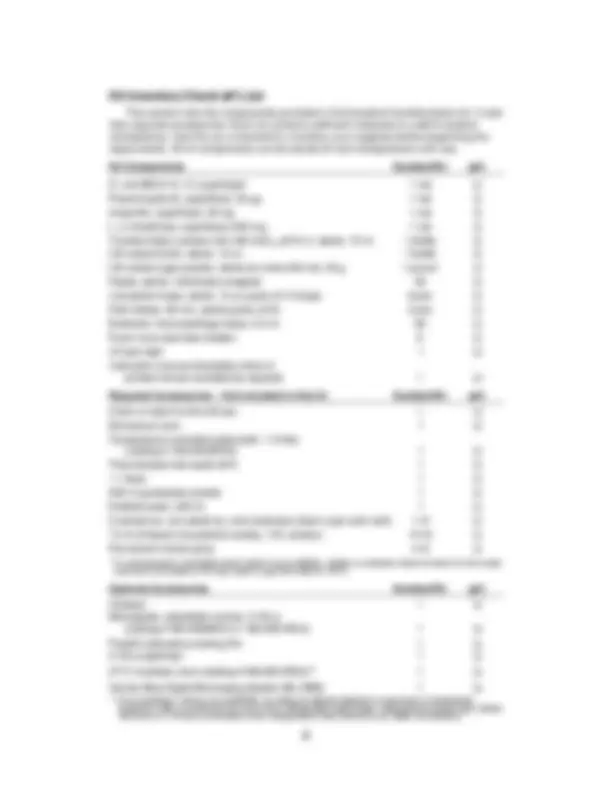
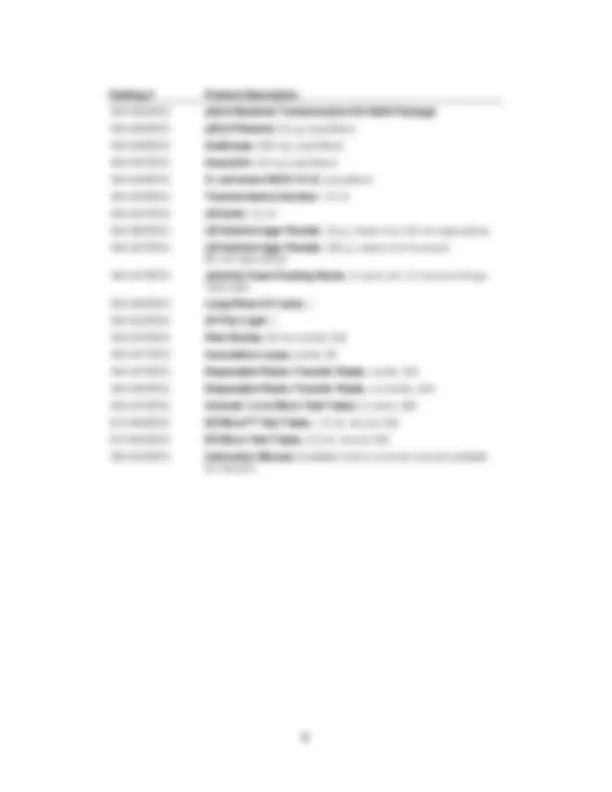
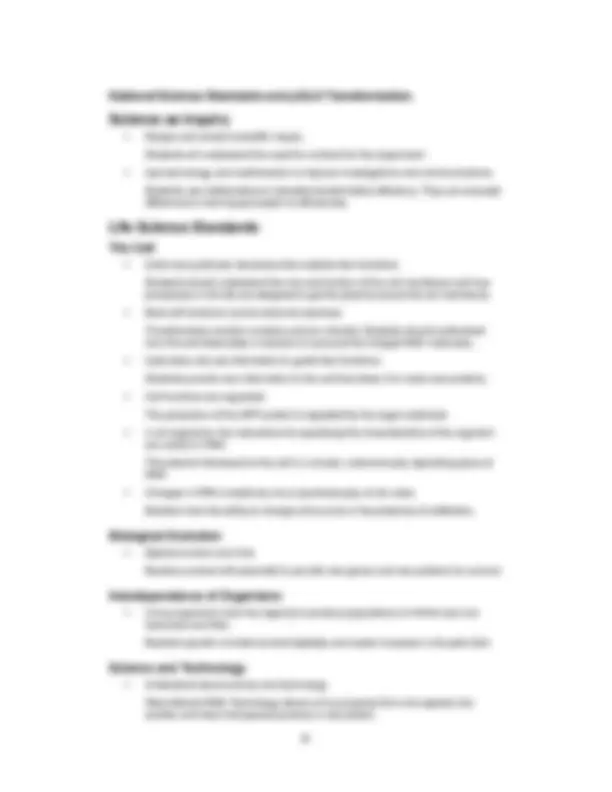
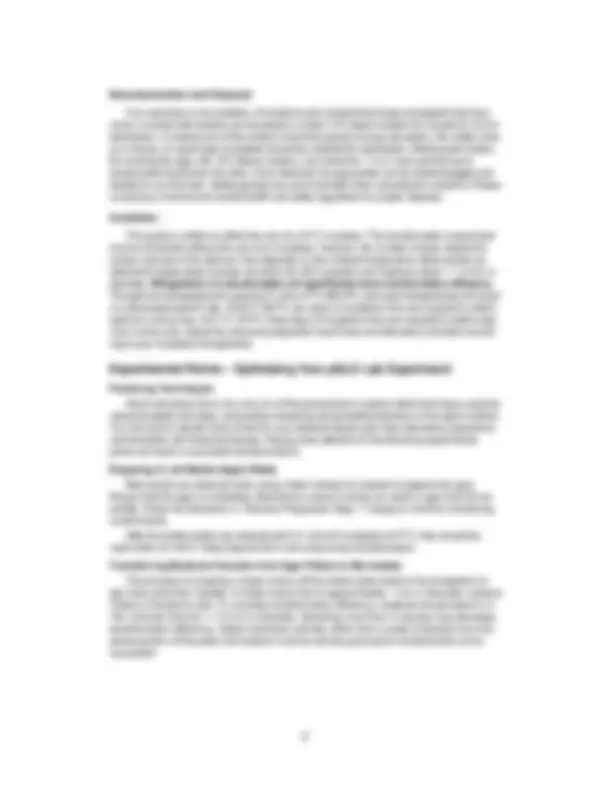
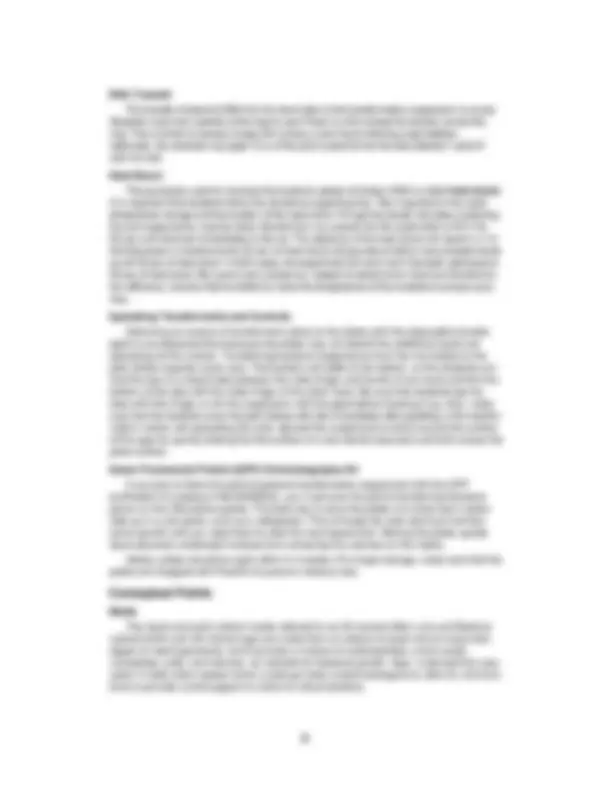
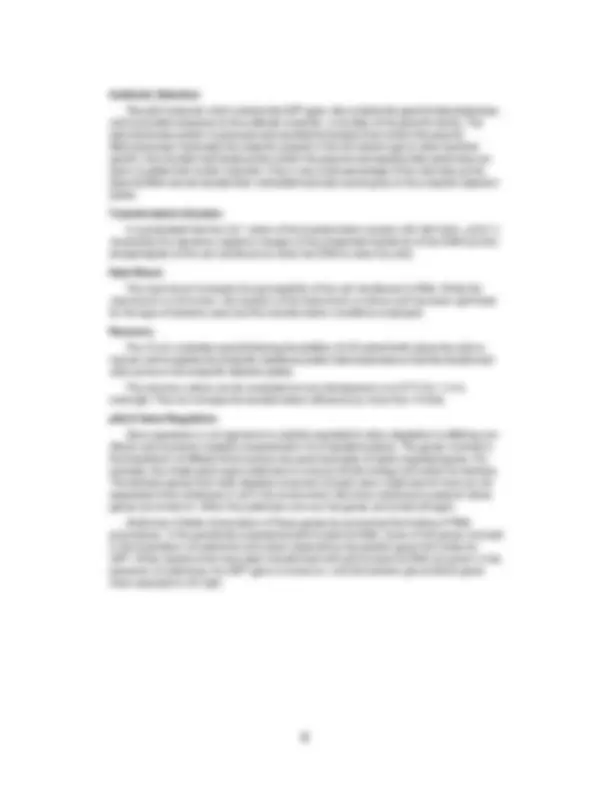

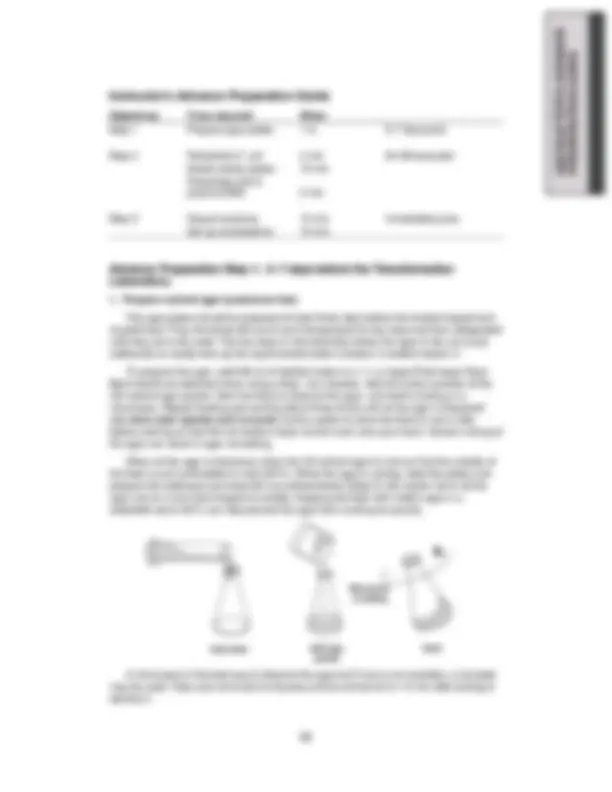
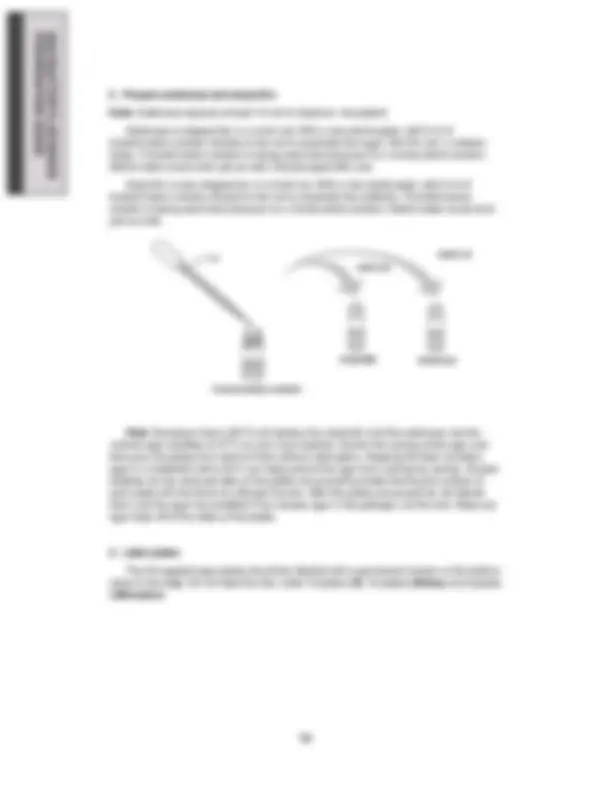
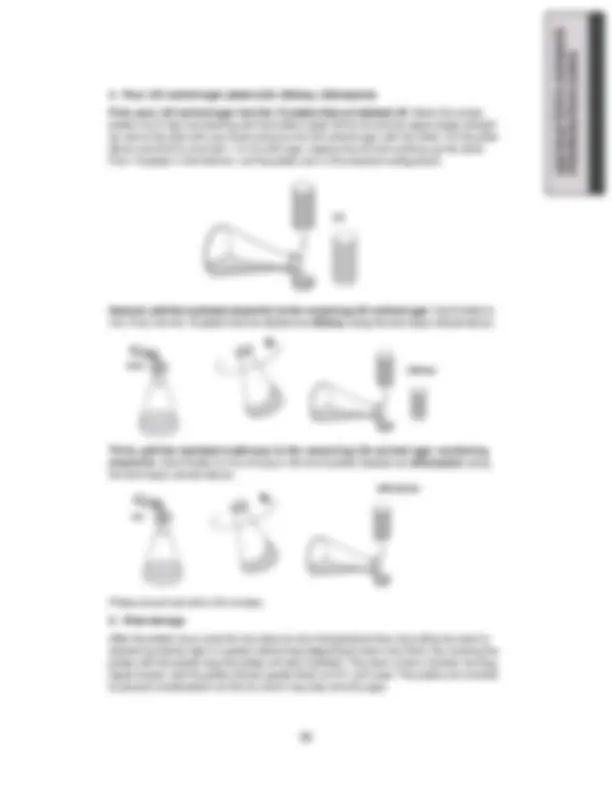
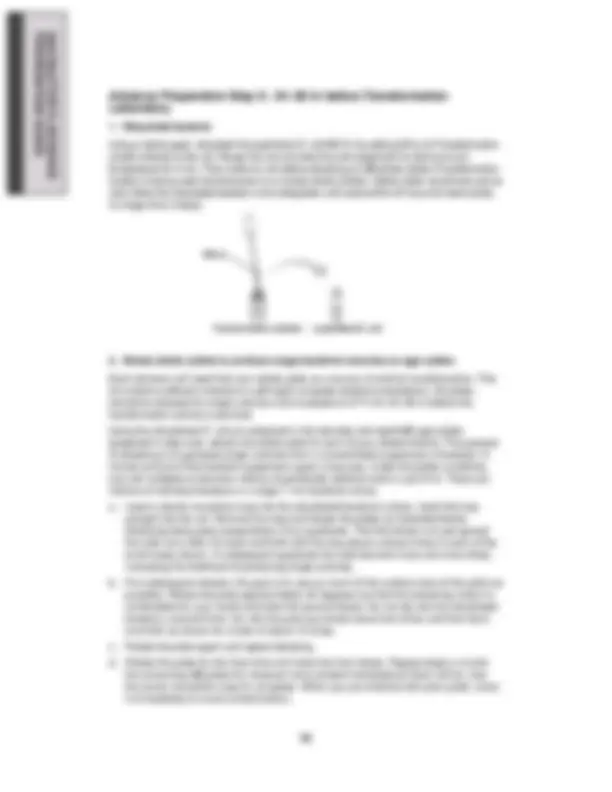
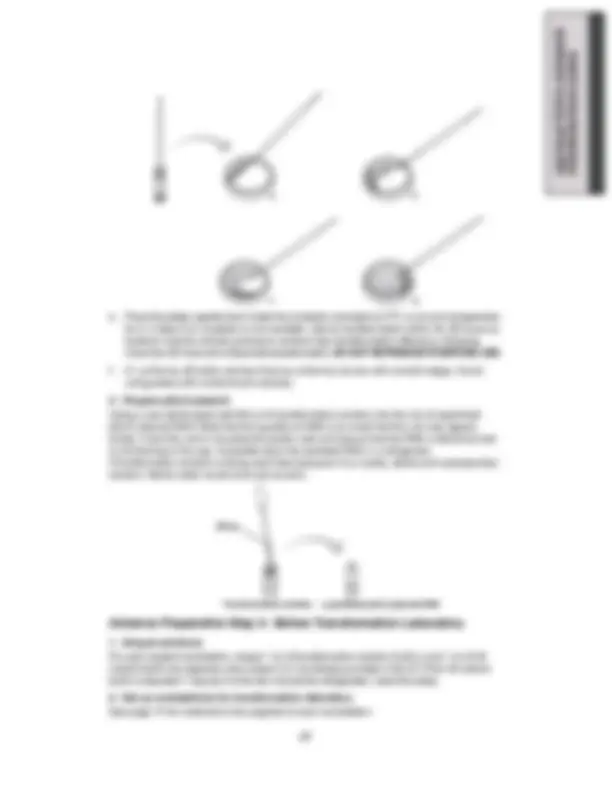
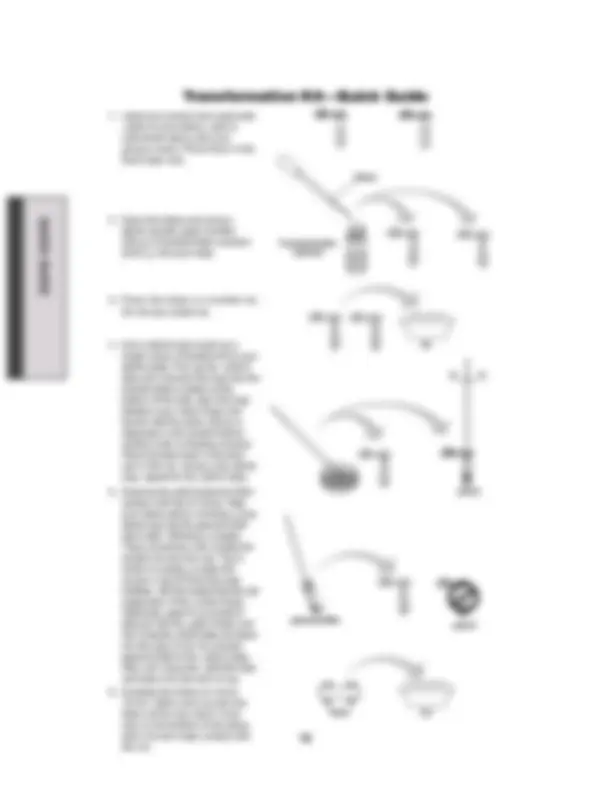
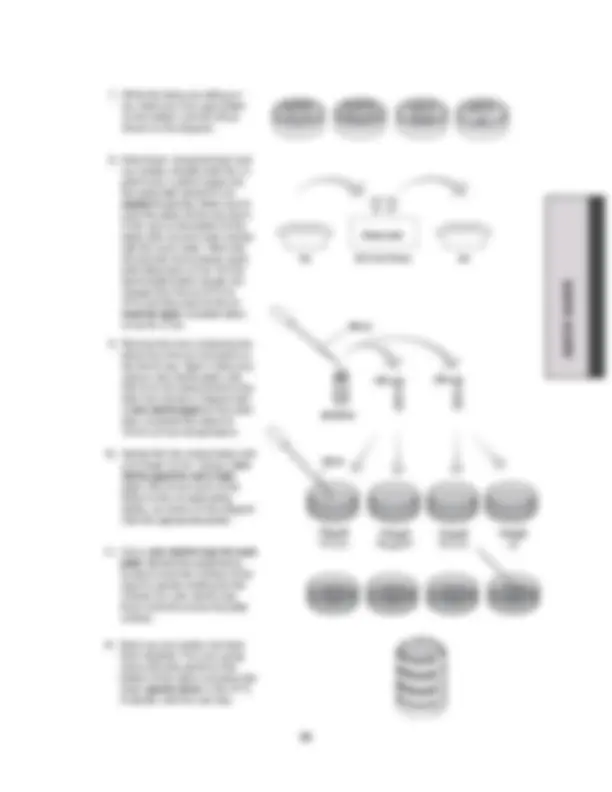
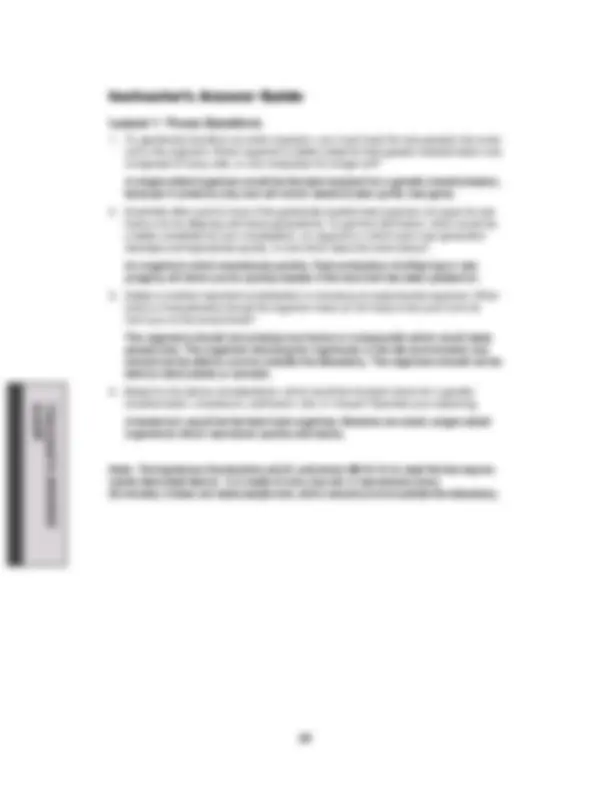
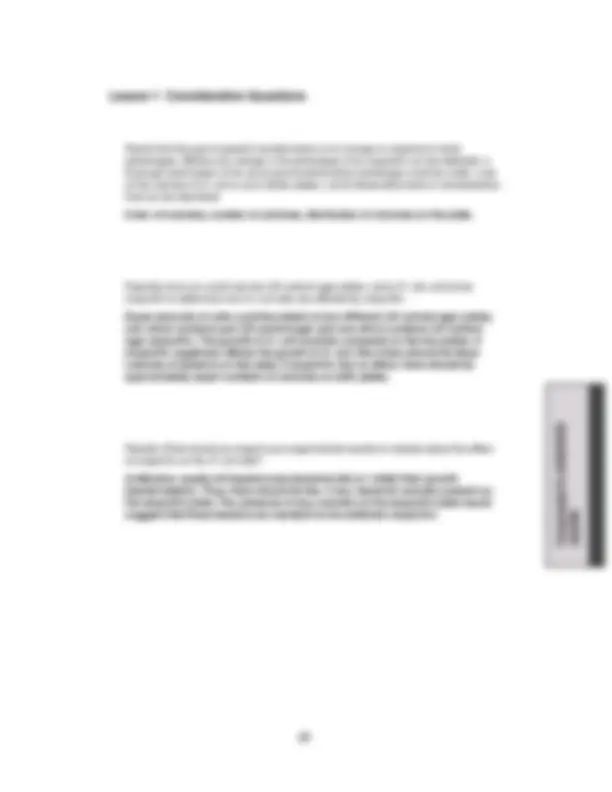
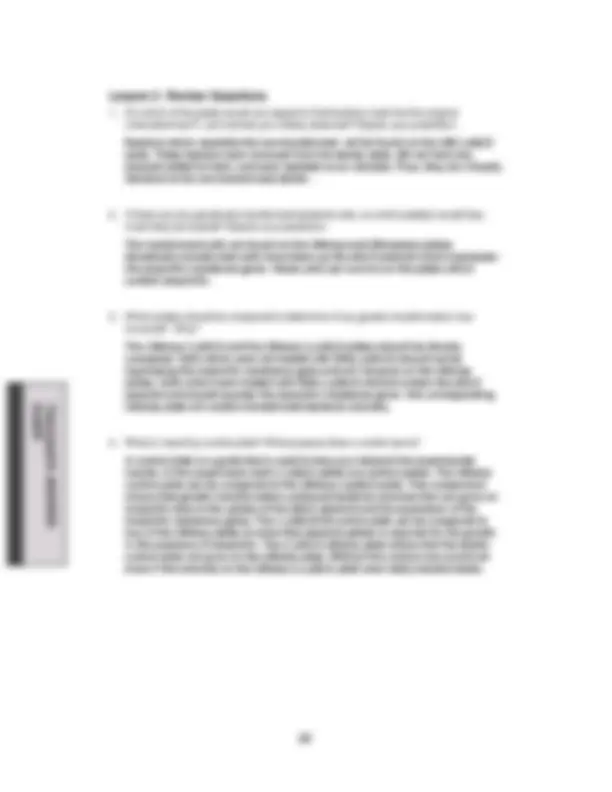
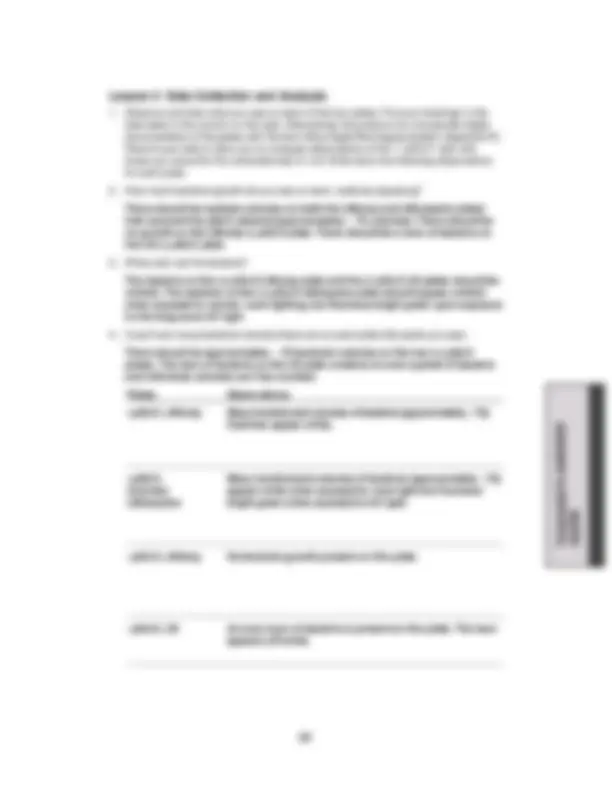
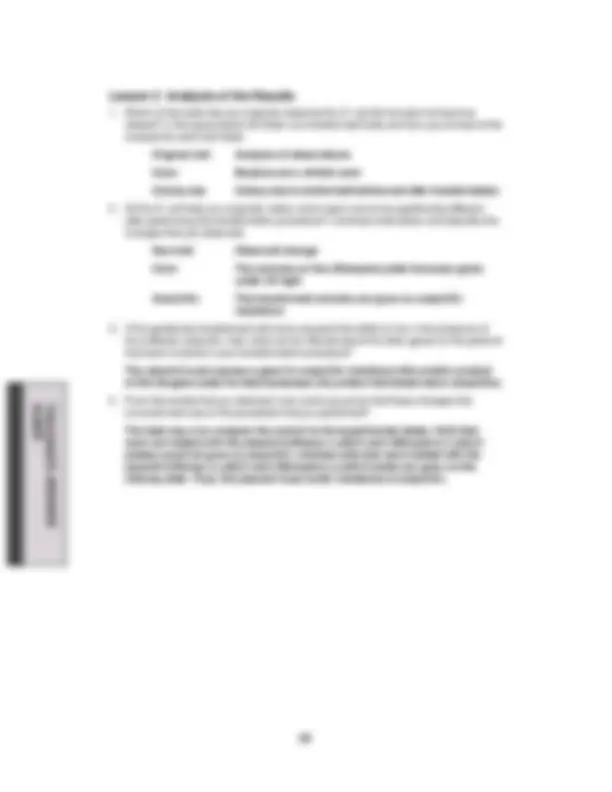
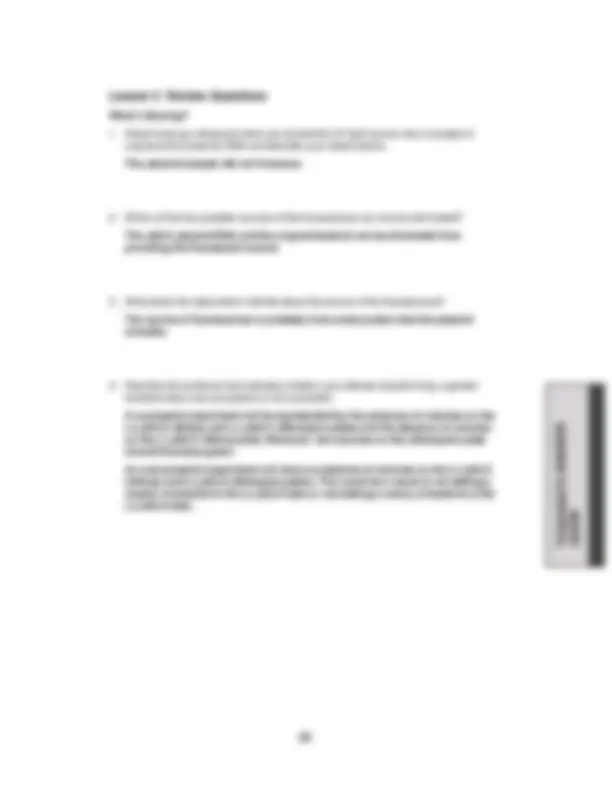
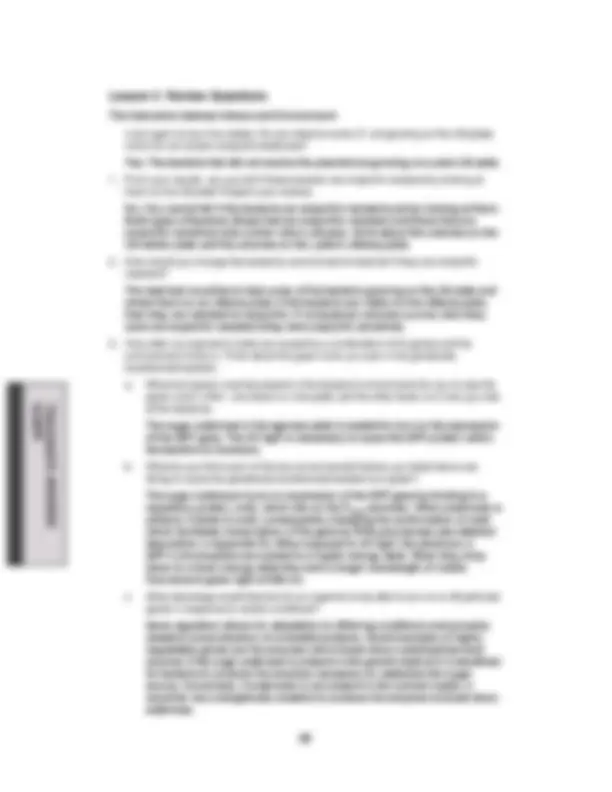
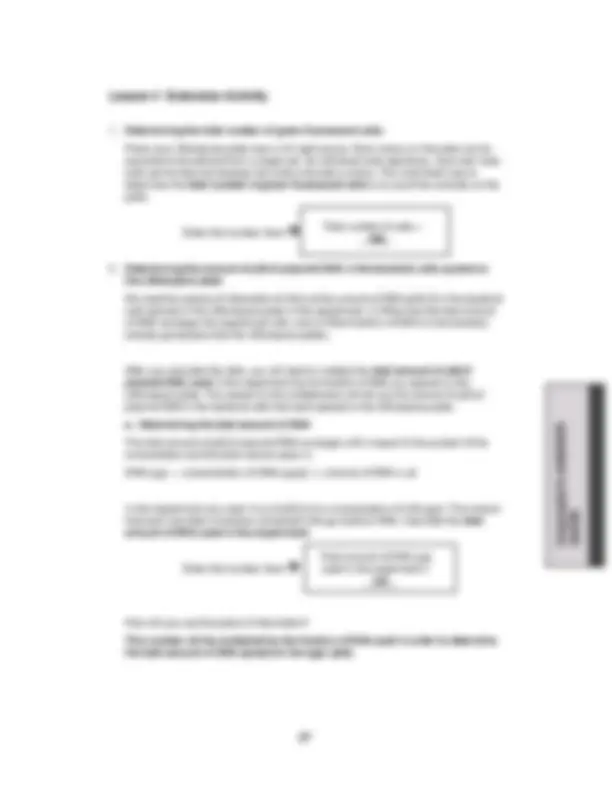
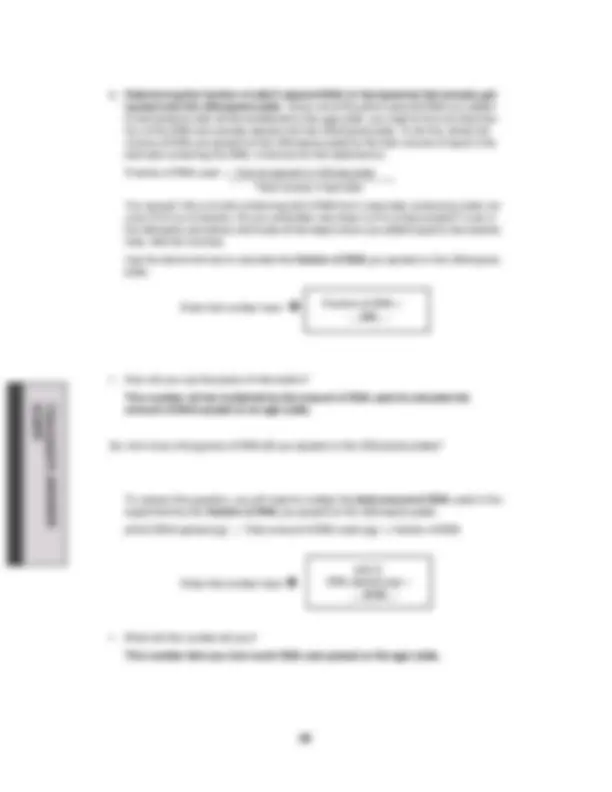
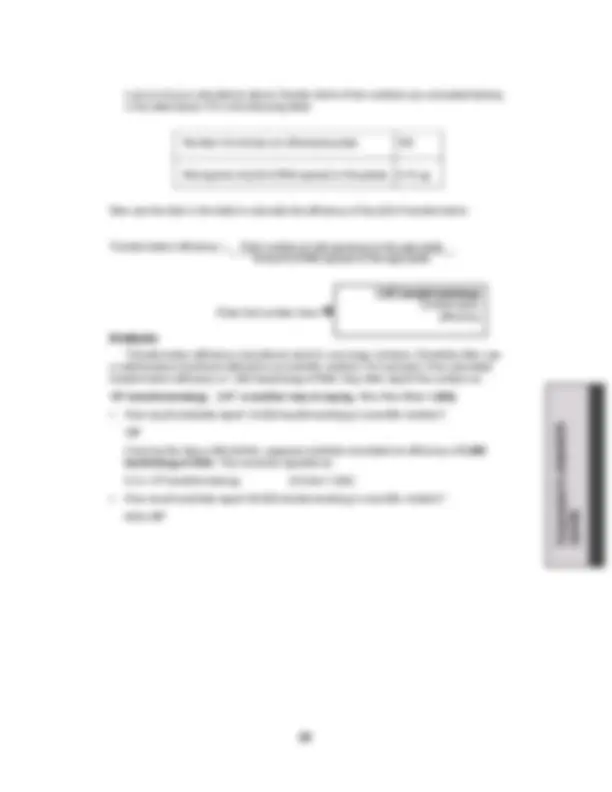
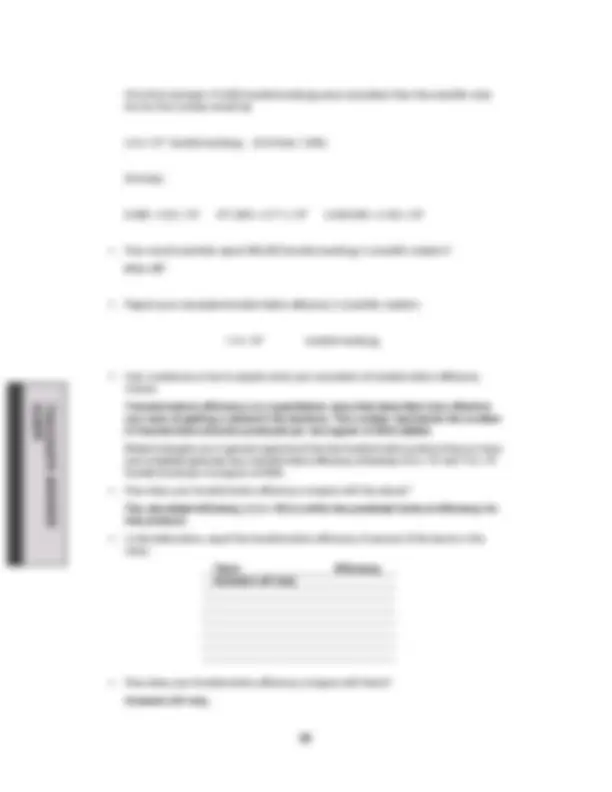
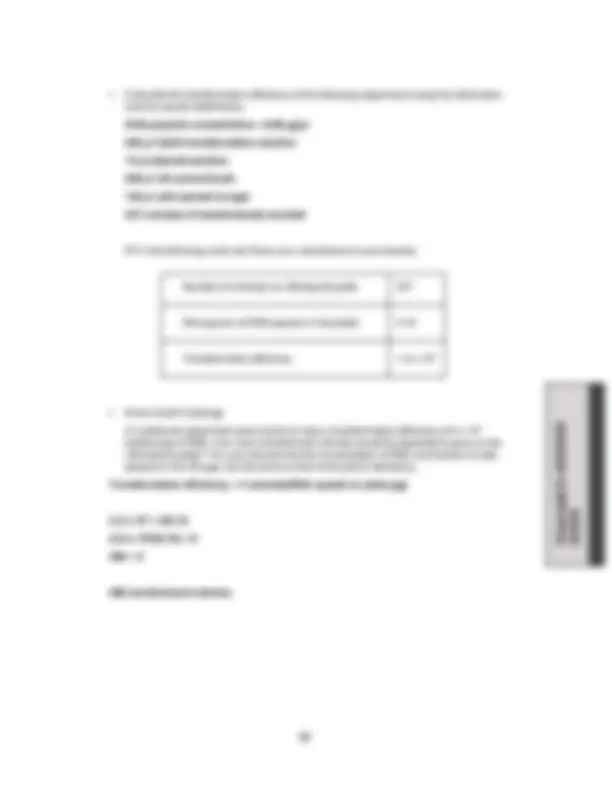
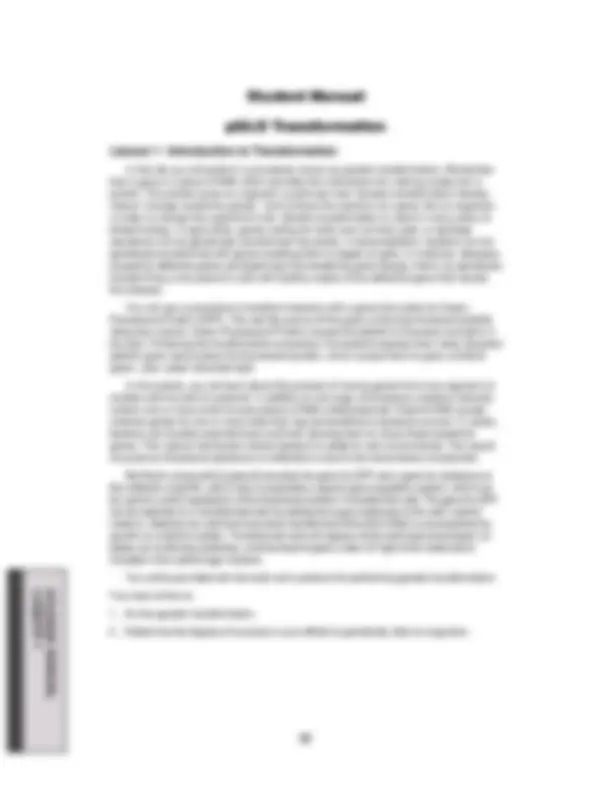
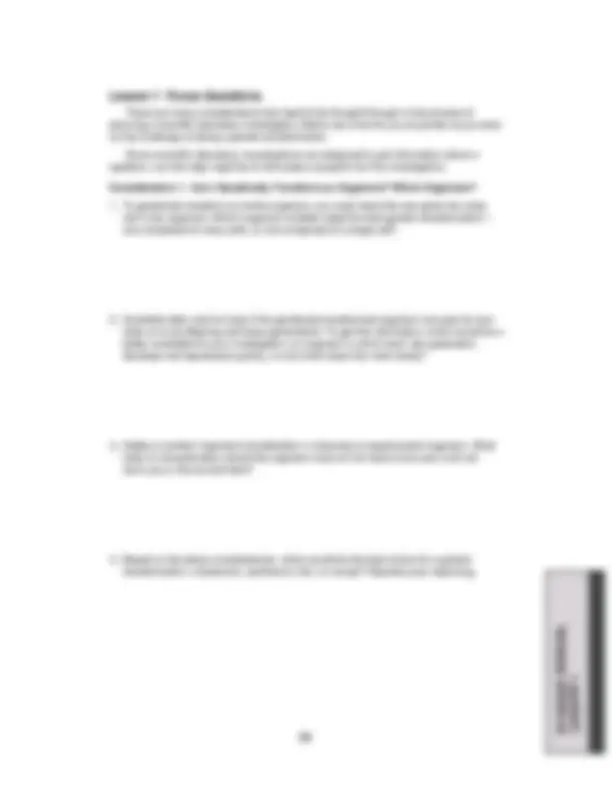
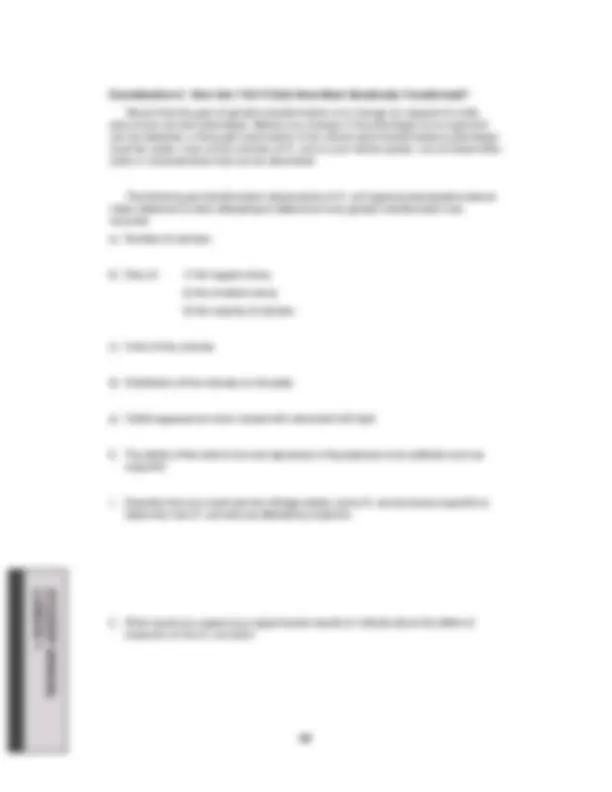
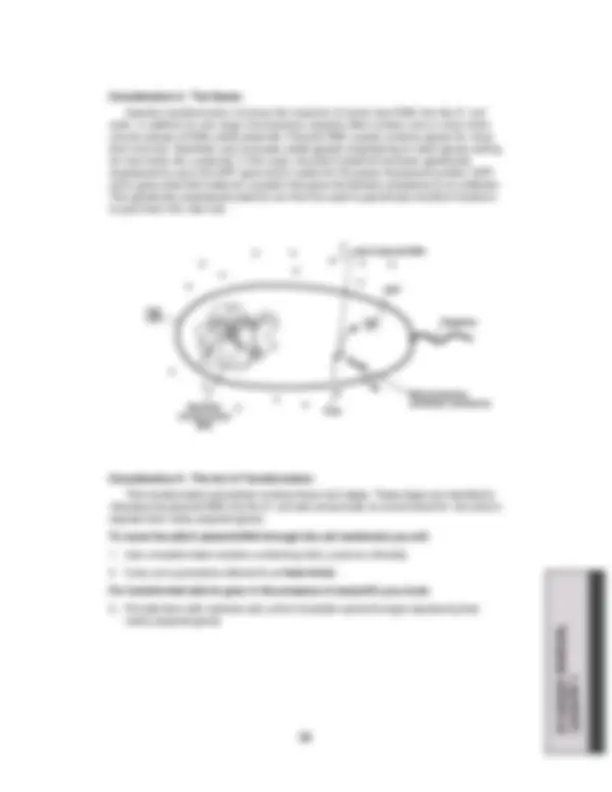
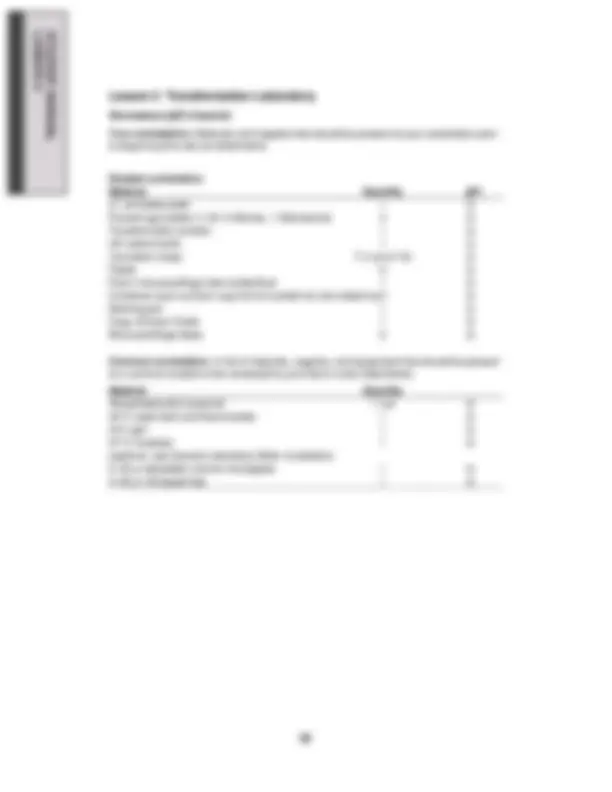
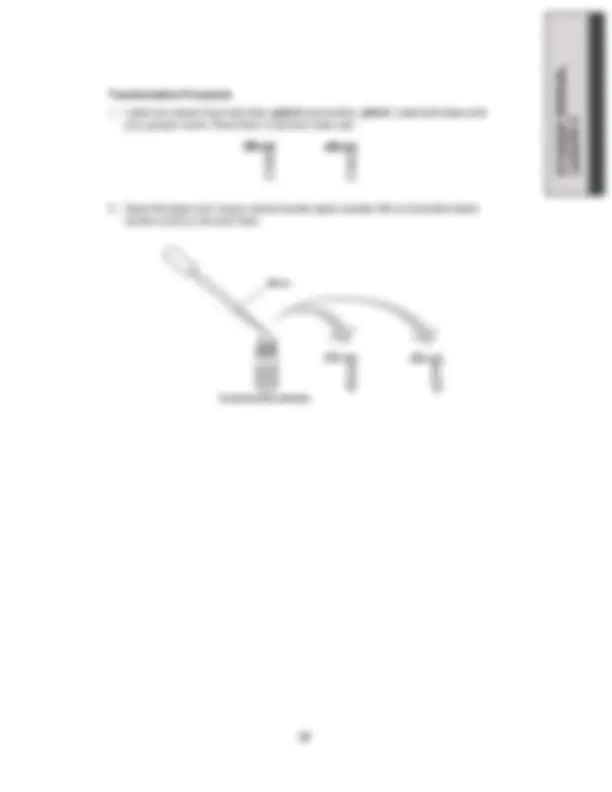
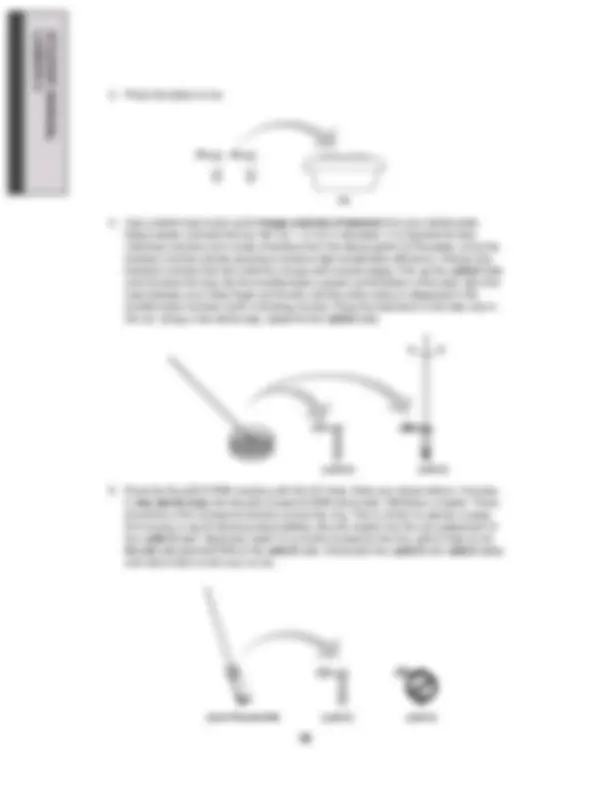
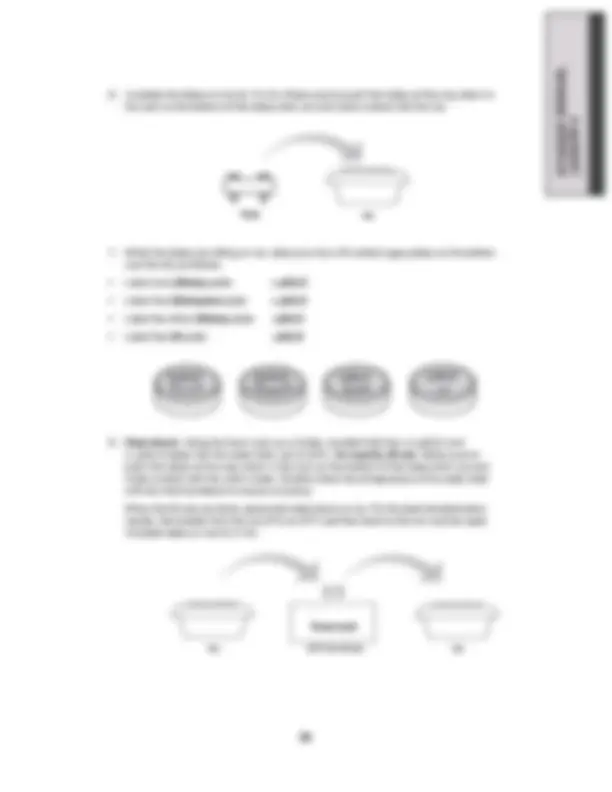
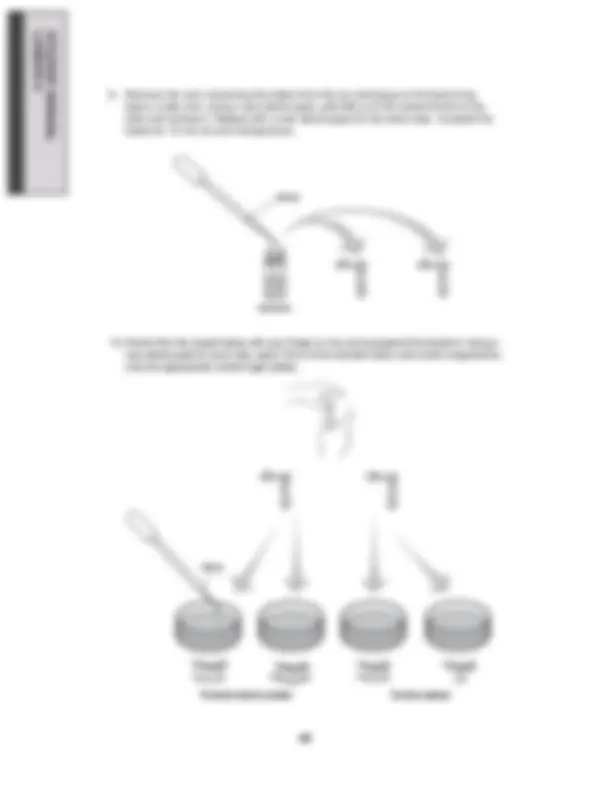
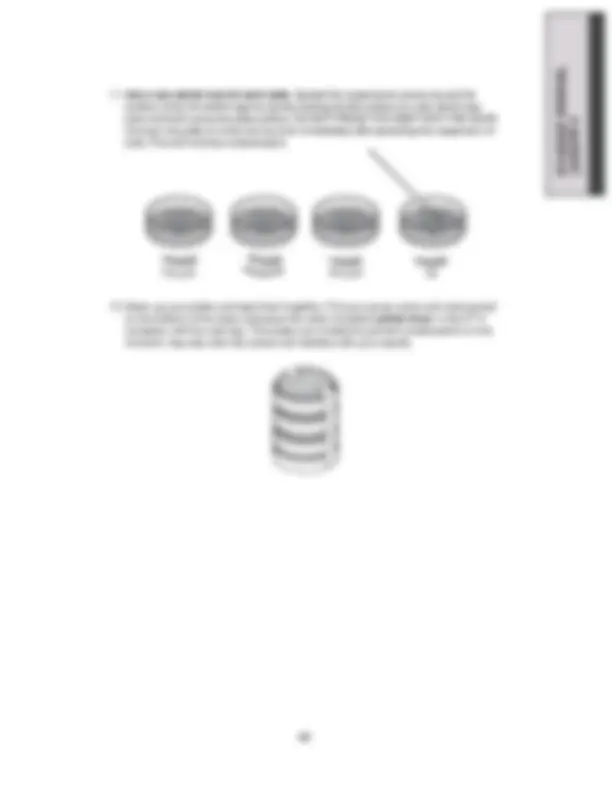
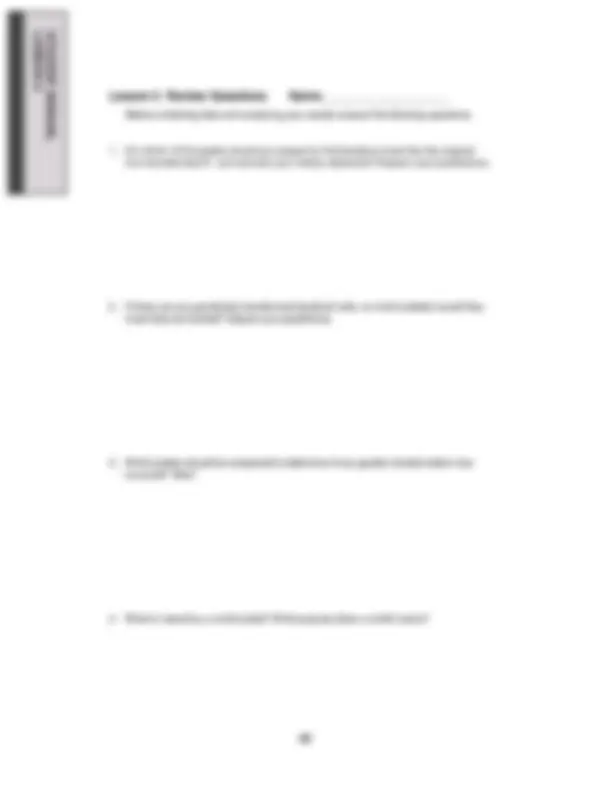

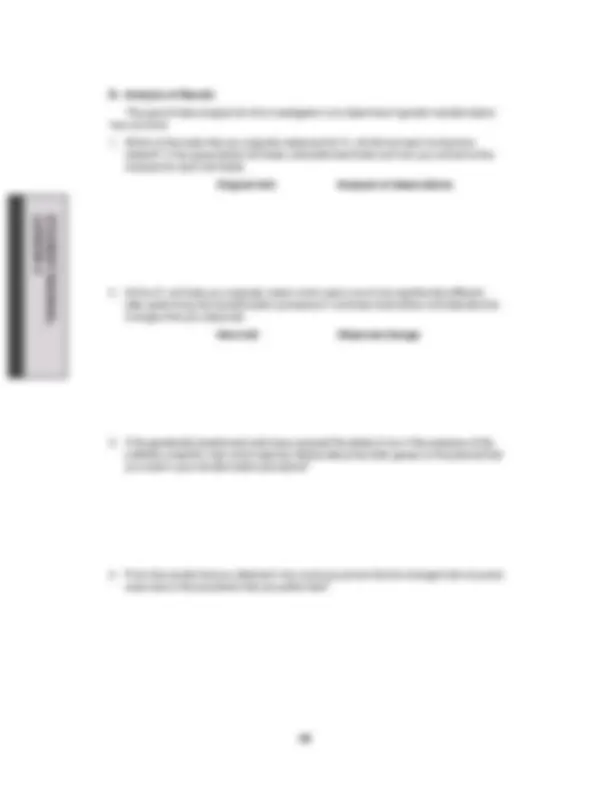
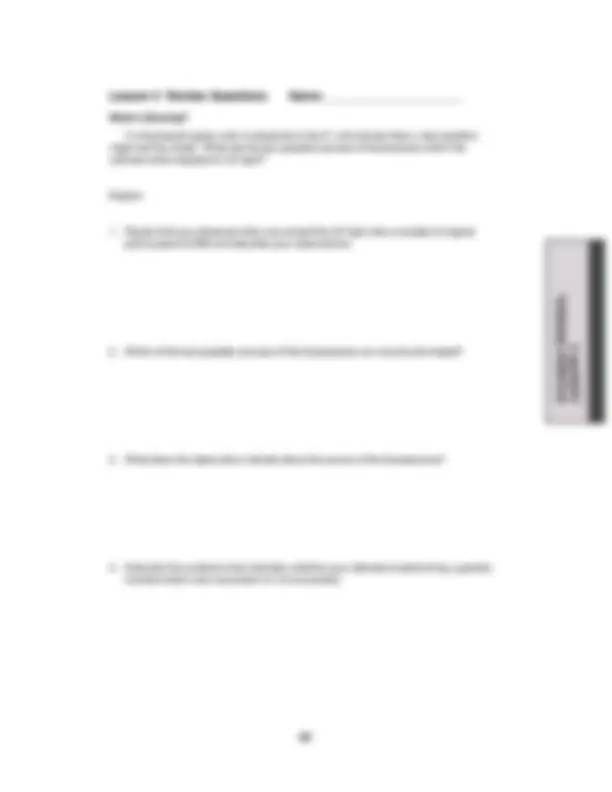
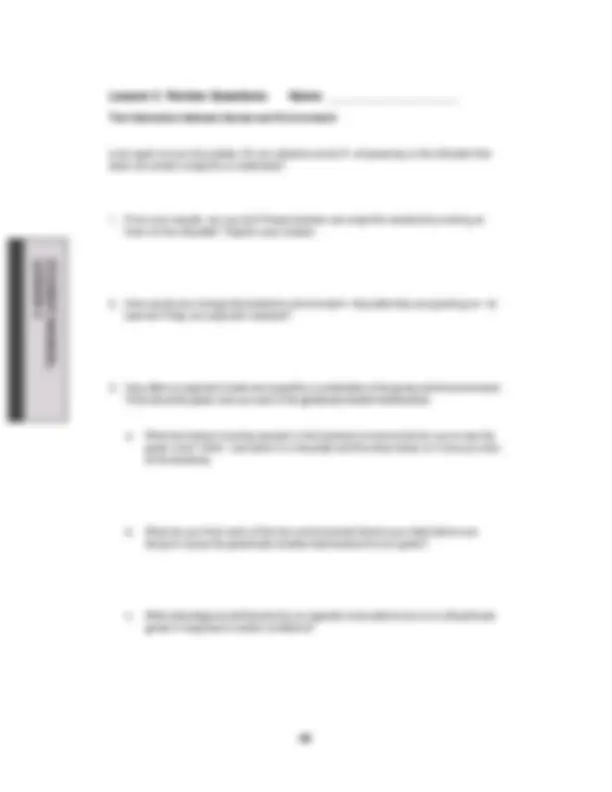
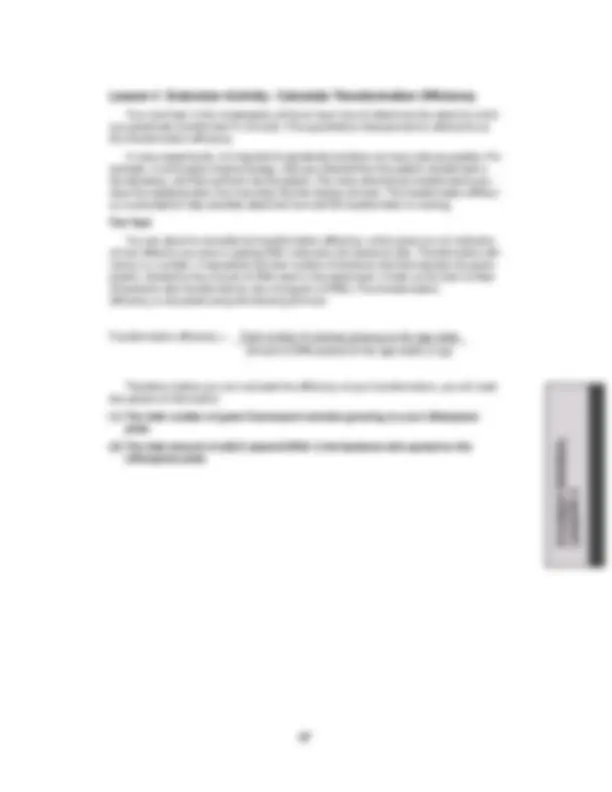
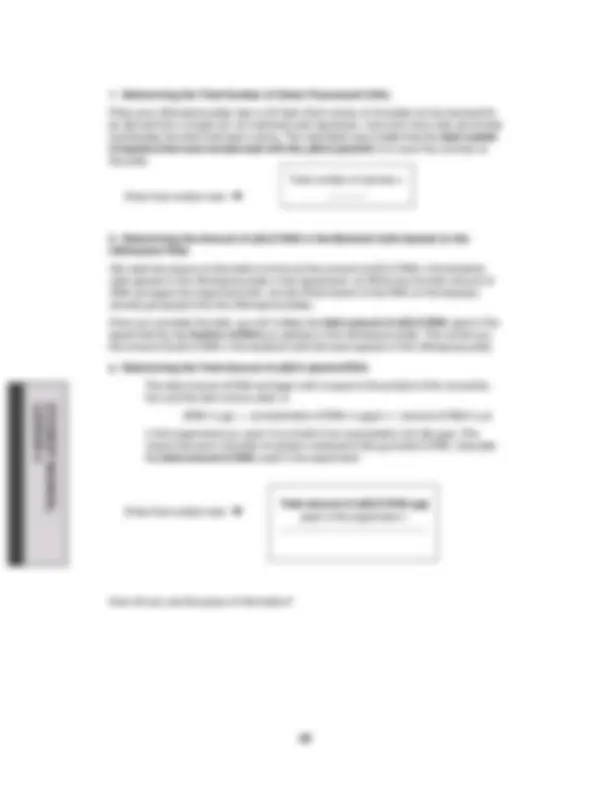
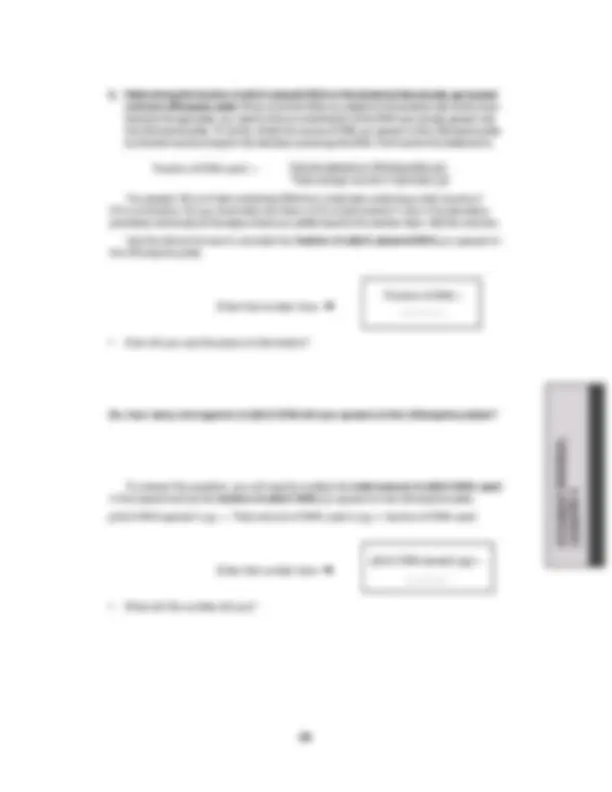
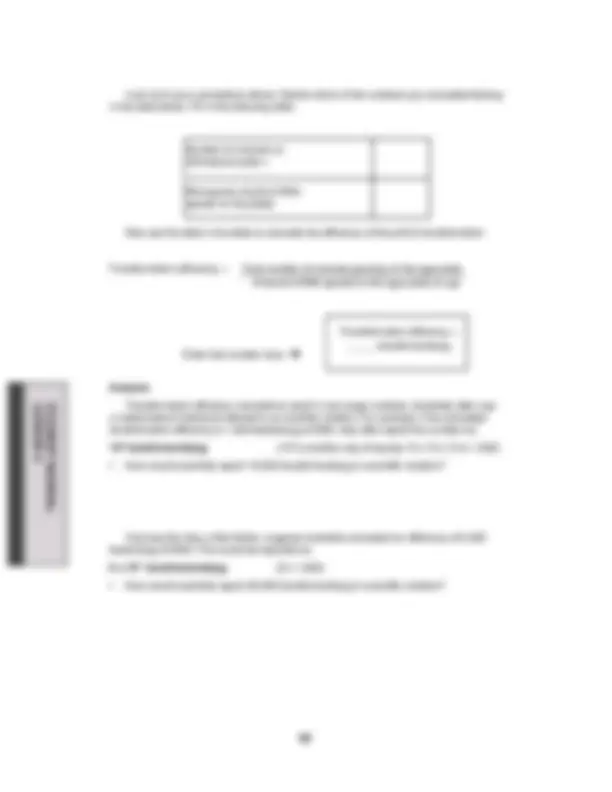

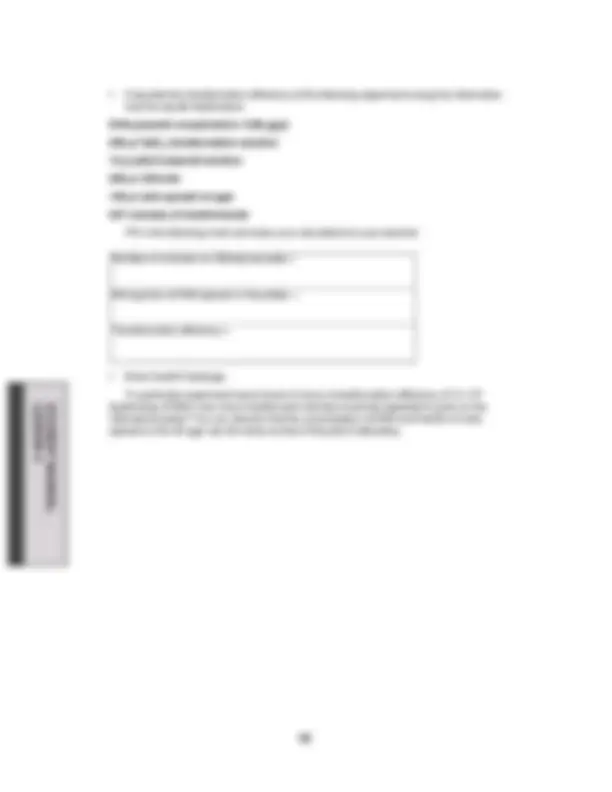
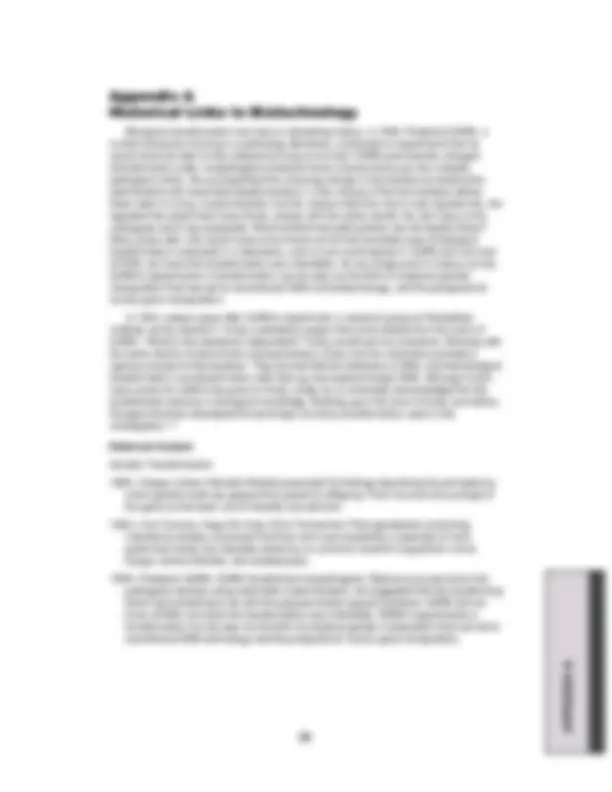
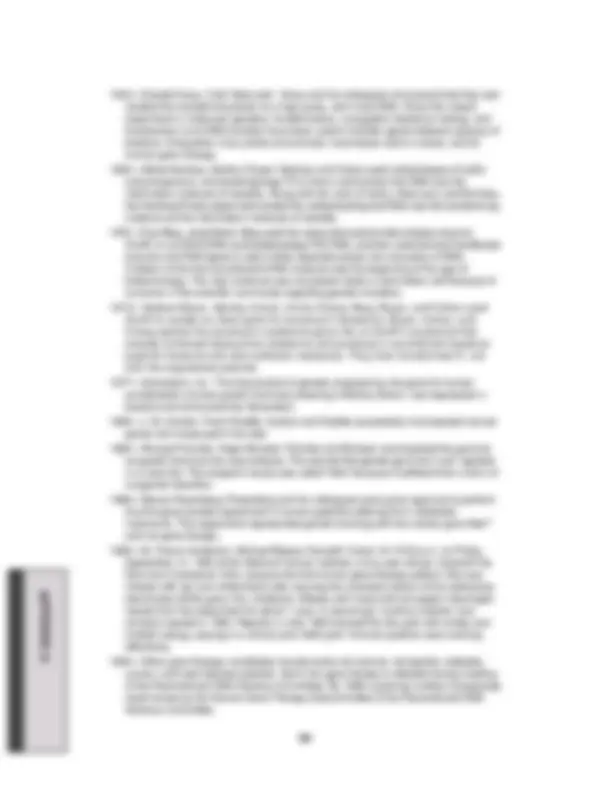
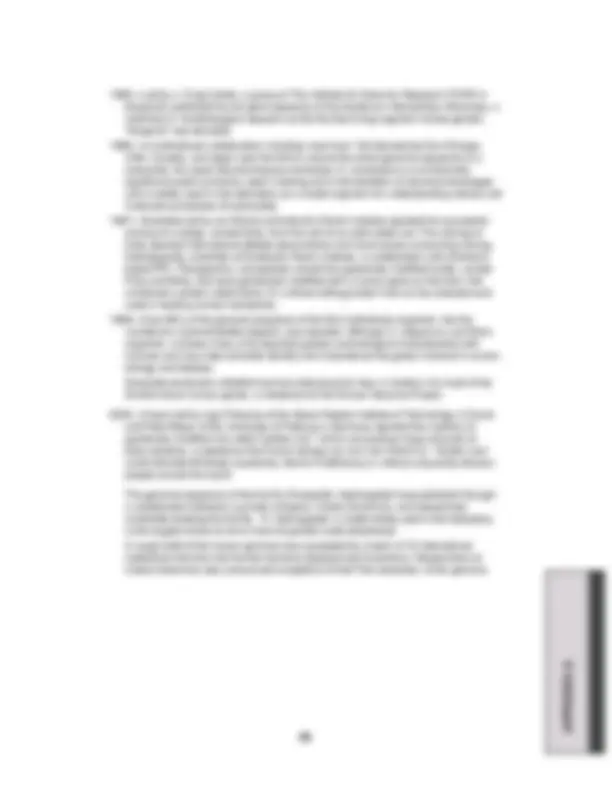
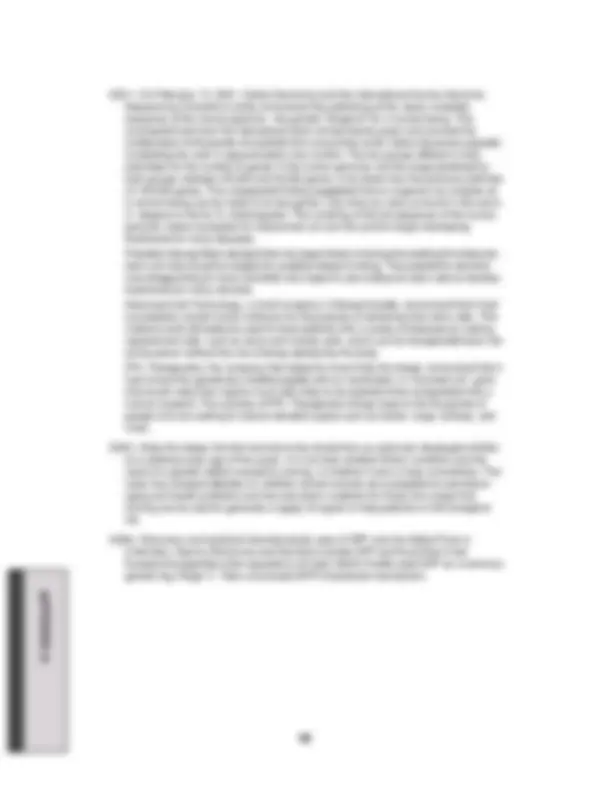
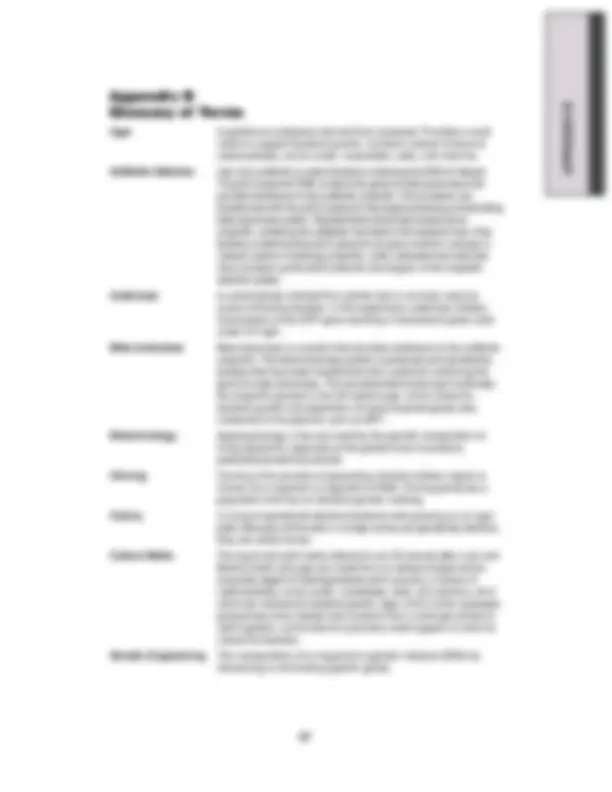
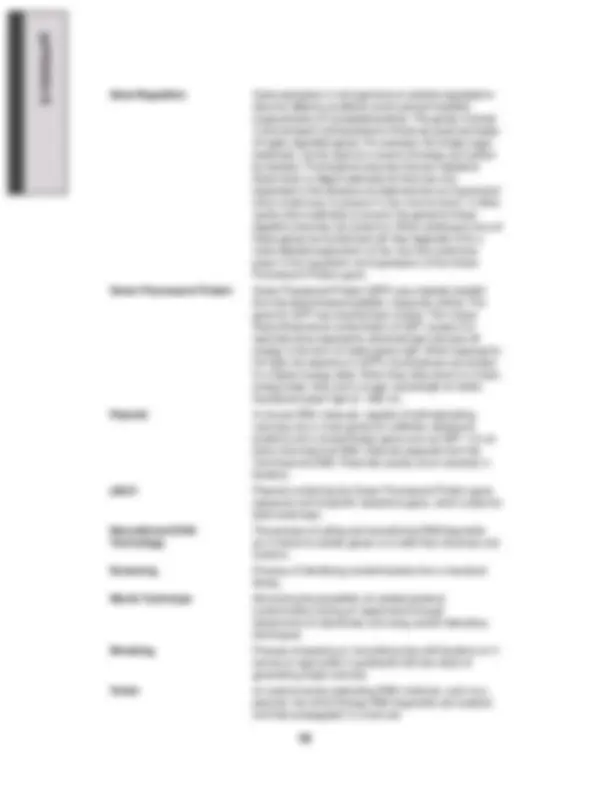
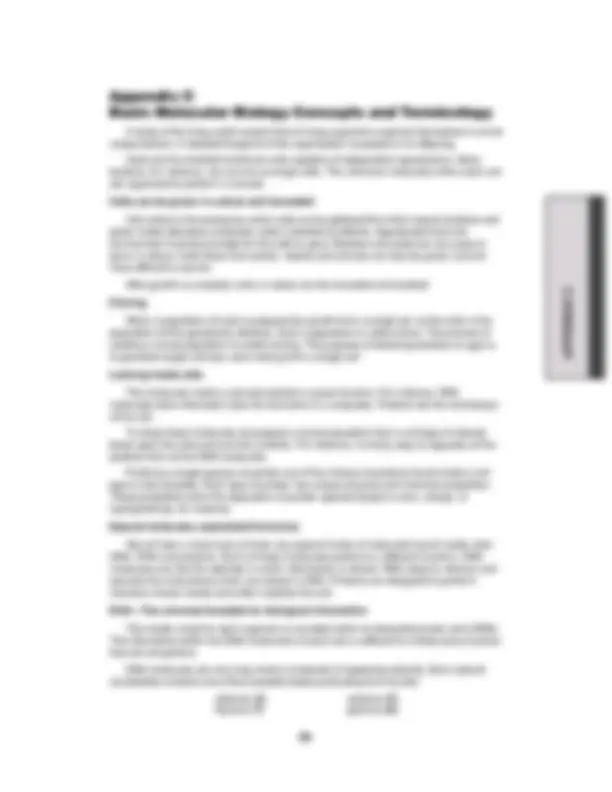
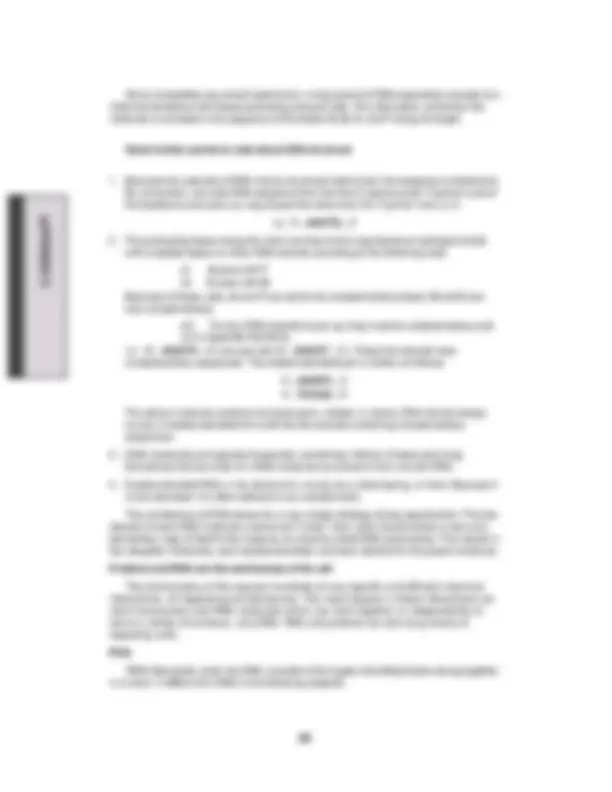
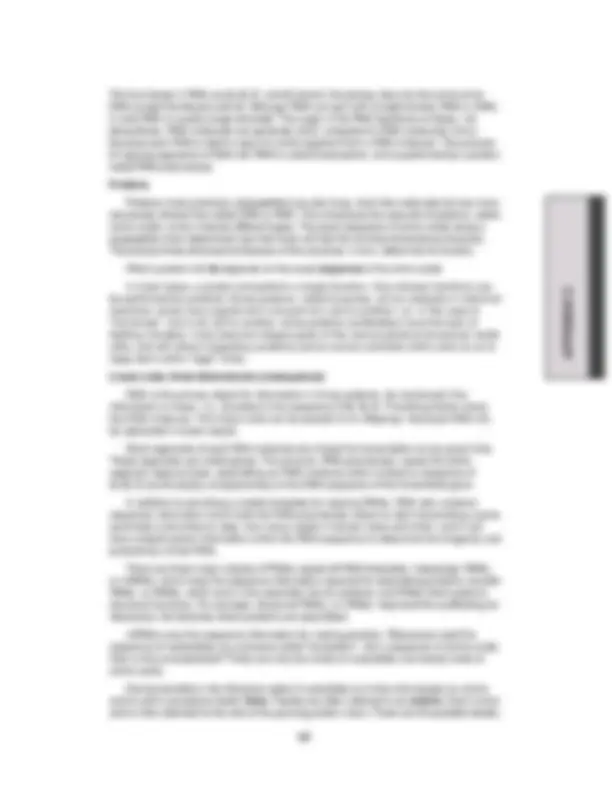
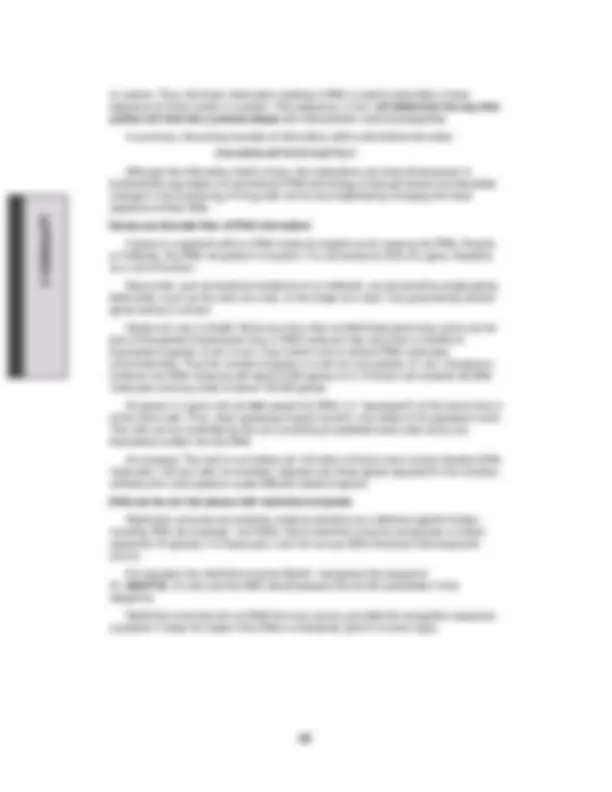
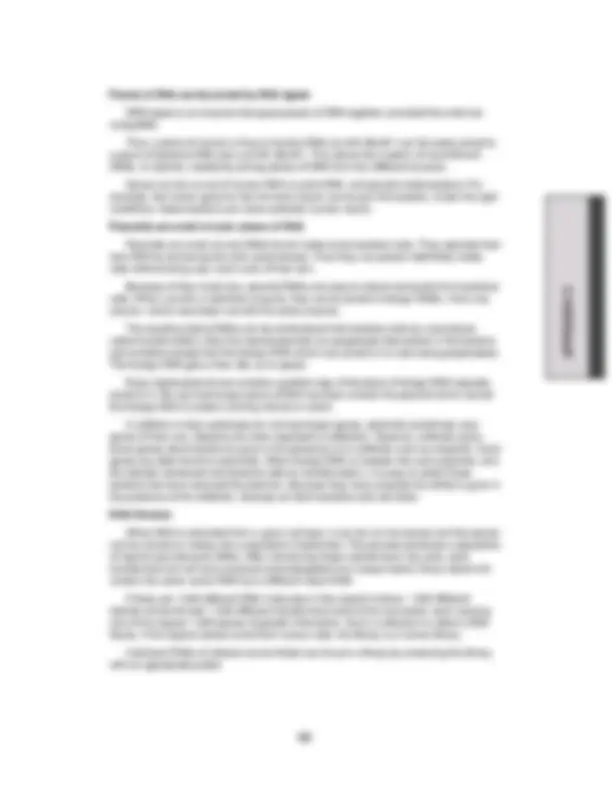
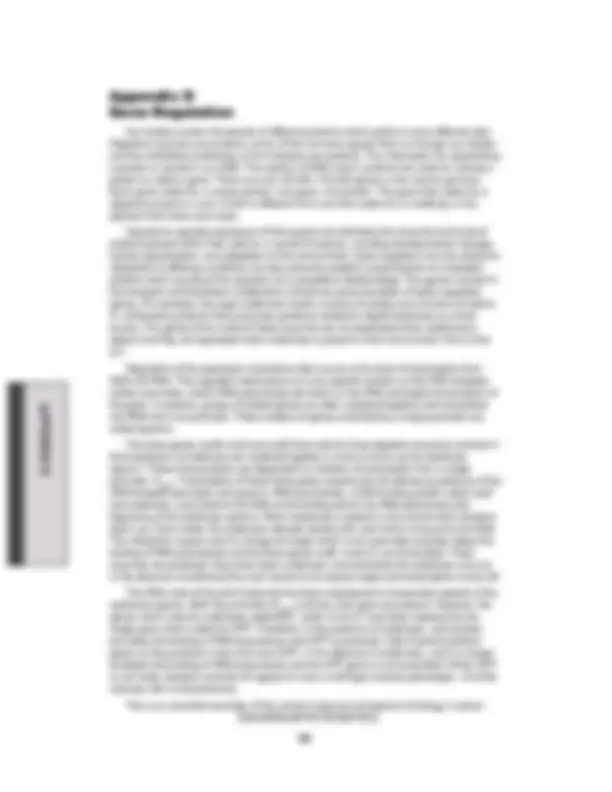

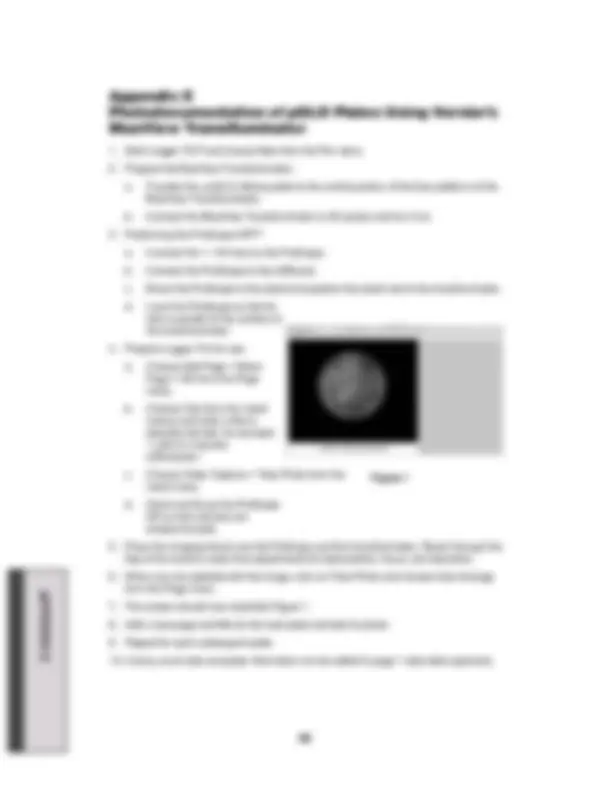
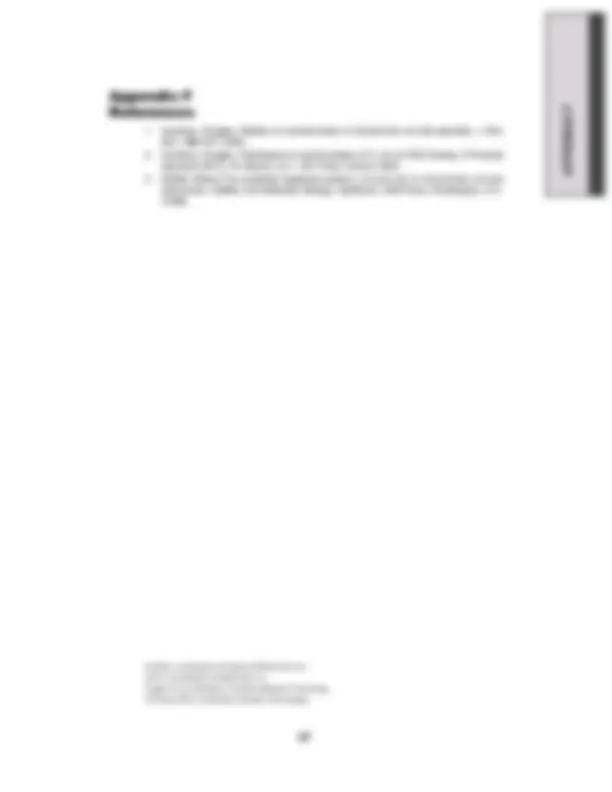





Study with the several resources on Docsity

Earn points by helping other students or get them with a premium plan


Prepare for your exams
Study with the several resources on Docsity

Earn points to download
Earn points by helping other students or get them with a premium plan
Community
Ask the community for help and clear up your study doubts
Discover the best universities in your country according to Docsity users
Free resources
Download our free guides on studying techniques, anxiety management strategies, and thesis advice from Docsity tutors
Transformation Laboratory with prelab questions
Typology: Lab Reports
1 / 76

This page cannot be seen from the preview
Don't miss anything!





































































For technical support call your local Bio-Rad office, or in the U.S., call 1-800-424-
How can jellyfish shed light on the subject?
One of the biggest challenges for first-time students of biotechnology or molecular biology is that many of the events and processes they are studying are invisible. The Biotechnology Explorer program has a solution: a gene from a bioluminescent jellyfish and its Green Fluorescent Protein—GFP. GFP fluoresces a brilliant green when viewed with a hand-held long-wave ultraviolet light (such as a pocket geology lamp).
The gene for GFP was originally isolated from the jellyfish,Aequorea victoria. The wild-type jellyfish gene has been modified by Maxygen Inc., a biotechnology company in Santa Clara, California. Specific mutations were introduced into the DNA sequence, which greatly enhance fluorescence of the protein. This modified form of the GFP gene has been inserted into Bio-Rad’s pGLO plasmid and is now available exclusively from Bio-Rad for educational applications.
GFP is incredibly bright. Using pGLO to transform bacteria, students can actually observe gene expression in real time. Following the transformation with Bio-Rad’s GFP purification kit, students purify the genetically engineered GFP from their transformed bacteria using a simple chromatography procedure. The entire process is visible using the hand-held UV lamp.
Guided Investigation
The intent of this curriculum is to guide students through the thought process involved in a laboratory-based scientific procedure. The focus here is not so much on the answer or result, but rather on how the result was obtained and how it can be substantiated by careful observation and analysis of data. This is referred to as a guided inquiry-based laboratory investigation.
At each step along the way, student understanding of the process and the analysis of data is stressed. Instead of providing students with explanations or interpretations, the Student Manual poses a series of questions to focus and stimulate thinking about all aspects of the investigation. Answers are provided in the Instructor’s Answer Guide.
Student involvement in this process will result in an increased understanding of the scientific process and the value of proceeding into a task in an organized and logical fashion. Furthermore, we are expecting that students who engage in this type of process will start to develop a more positive sense of their ability to understand the scientific method.
Bio-Rad’s GFP-based curriculum is unique and has generated an unprecedented level of excitement among science educators. We strive to continually improve our curriculum and products. Your input is extremely important to us. We welcome your stories, comments, and suggestions.
Biotechnology Explorer Team Bio-Rad Laboratories 6000 James Watson Drive Hercules, CA 94547 Biotechnology_Explorer@bio-rad.com
Introduction to Transformation
In this lab, your students will perform a procedure known as genetic transformation. Genetic transformation occurs when a cell takes up (takes inside) and expresses a new piece of genetic material—DNA. This new genetic information often provides the organism with a new trait which is identifiable after transformation. Genetic transformation literally means change caused by genes and involves the insertion of one or more gene(s) into an organism in order to change the organism’s traits. Genetic transformation is used in many areas of biotechnology. In agriculture, genes coding for traits such as frost, pest, or drought resistance can be genetically transformed into plants. In bioremediation, bacteria can be genetically transformed with genes enabling them to digest oil spills. In medicine, diseases caused by defective genes are beginning to be treated by gene therapy; that is, by genetically transforming a sick person’s cells with healthy copies of the defective gene that causes their disease. Genes can be cut out of human, animal, or plant DNA and placed inside bacteria. For example, a healthy human gene for the hormone insulin can be put into bacteria. Under the right conditions, these bacteria can make authentic human insulin. This insulin can then be used to treat patients with the genetic disease, diabetes, because their insulin genes do not function normally.
The pGLO System
With the pGLO transformation kit, students use a simple procedure to transform bacteria with a gene that codes for Green Fluorescent Protein (GFP). The real-life source of this gene is the bioluminescent jellyfishAequorea victoria, and GFP causes the jellyfish to fluoresce and glow in the dark. Following the transformation procedure, the bacteria express their newly acquired jellyfish gene and produce the fluorescent protein which causes them to glow a brilliant green color under ultraviolet light. In this activity, students will learn about the process of moving genes from one organism to another with the aid of a plasmid. In addition to one large chromosome, bacteria naturally contain one or more small circular pieces of DNA called plasmids. Plasmid DNA usually contains genes for one or more traits that may be beneficial to bacterial survival. In nature, bacteria can transfer plasmids back and forth, allowing them to share these beneficial genes. This natural mechanism allows bacteria to adapt to new environments. The recent occurrence of bacterial resistance to antibiotics is due to the transmission of plasmids. Bio-Rad’s unique pGLO plasmid contains the gene for GFP and a gene for resistance to the antibiotic ampicillin. pGLO also incorporates a special gene regulation system that can be used to control expression of the fluorescent protein in transformed cells. The gene for GFP can be switched on in transformed cells simply by adding the sugar arabinose to the cell’s nutrient medium. Selection for cells that have been transformed with pGLO DNA is accomplished by growth on antibiotic plates. Transformed cells will appear white (wild-type phenotype) on plates not containing arabinose, and fluorescent green when arabinose is included in the nutrient agar. The unique construction of pGLO allows educators and students, for the very first time, to easily explore mechanisms of gene regulation (Appendix D) and genetic selection. And, the entire process is observable with an inexpensive long-wave UV lamp or with the provided pen-light. In order for your students to gain the most from this experiment, they should know what a gene is and understand the relationship between genes and proteins. For a more detailed discussion of these and other basic molecular biology concepts and terms, refer to the review provided in Appendix B. This pGLO transformation kit provides the opportunity for additional activities involving purification of the recombinant fluorescent protein from transformed bacteria using the GFP chromatography kit (catalog # 166-0005EDU) and the separation of proteins expressed in E. coli, such as the GFP protein by using the pGLO SDS-PAGE Extension kit (catalog #166-0013EDU.)
This section lists the components provided in the bacterial transformation kit. It also lists required accessories. Each kit contains sufficient materials to outfit 8 student workstations. Use this as a checklist to inventory your supplies before beginning the experiments. All kit components can be stored at room temperature until use.
Kit Components Number/Kit ( ✔ )
E. coli HB101 K–12, lyophilized 1 vial ❏
Plasmid (pGLO), lyophilized, 20 μg 1 vial ❏
Ampicillin, lyophilized, 30 mg 1 vial ❏
L (+) Arabinose, lyophilized, 600 mg 1 vial ❏
Transformation solution (50 mM CaCl 2 , pH 6.1), sterile, 15 ml 1 bottle ❏ LB nutrient broth, sterile, 10 ml 1 bottle ❏
LB nutrient agar powder, sterile (to make 500 ml), 20 g 1 pouch ❏
Pipets, sterile, individually wrapped 50 ❏
Inoculation loops, sterile, 10 μl, packs of 10 loops 8 pks ❏
Petri dishes, 60 mm, sterile packs of 20 2 pks ❏
Multicolor microcentrifuge tubes, 2.0 ml 60 ❏
Foam micro test tube holders 8 ❏
UV pen light 1 ❏
Instruction manual (Available online or printed manual available by request) 1 ❏
Required Accessories – Not included in this kit Number/Kit ( ✔ )
Clock or watch to time 50 sec 1 ❏
Microwave oven 1 ❏
Temperature controlled water bath, 1–6 liter (catalog # 166-0504EDU)*^1 ❏
Thermometer that reads 42oC 1 ❏
1 L flask 1 ❏
500 ml graduated cylinder 1 ❏
Distilled water, 500 ml 1 ❏
Crushed ice, not cubed ice, and containers (foam cups work well) 1–8 ❏
10 ml of bleach (household variety), 10% solution 10 ml ❏
Permanent marker pens 4–8 ❏
Optional Accessories Number/Kit ( ✔ )
Vortexer 1 ❏ Micropipets, adjustable volume, 2–20 μl (catalog #166-0506EDU or 166-0551EDU) 1 ❏
Parafilm laboratory sealing film 1 ❏ 2–20 μl pipet tips 1 ❏
37°C incubator oven (catalog #166-0501EDU)** 1 ❏
Vernier Blue Digital BioImaging System (BL-DBS) 1 ❏ ** If an incubator oven is not available, try using an electric blanket or construct a homemade incubator with a cardboard box and a low voltage light bulb inside. Otherwise incubate agar plates 48 hours to 72 hours at ambient room temperature (see General Lab Skills–Incubation).
Science as Inquiry
Life Science Standards
Each of the three lab sessions is designed to be carried out in consecutive 50 min periods. The detailed lab protocol can be found in the Student Manual.
Suggested laboratory schedule for the students
Day 1 Setting the Stage Lecture and discussion Student considerations 1–
Day 2 Transformation Laboratory Transform cells and spread plates Student laboratory focus questions
Day 3 Data Collection and Analysis Observe transformants and controls Analyze and interpret results Student considerations
Day 4 Extension Activities Calculate transformation efficiency
GFP chromatography kit (catalog #166-0005EDU) pGLO SDS-PAGE Extension kit (catalog #166-0013EDU)
Some countries outside the U.S. may require a special license to use this kit. Please refer to your country’s legislative authorities for proper guidelines.
TheEscherichia coli bacteria HB101 K-12 strain contained in this kit is not a pathogenic organism like theE. coli strain O157 H7 that has sometimes been implicated in food poisoning. HB101 K-12 has been genetically modified to prevent its growth unless grown on an enriched medium. However, handling of theE. coli K-12 strain requires the use of standard Microbiological Practices. These practices include, but are not limited to, the following. Work surfaces are decontaminated once a day and after any spill of viable material. All contaminated liquid or solid wastes are decontaminated before disposal. All persons must wash their hands: (i) after they handle material containing bacteria, and (ii) before exiting the laboratory. All procedures are performed carefully to minimize the creation of aerosols. Mechanical pipeting devices are used, mouth pipetting is prohibited; eating, drinking, smoking, and applying cosmetics are not permitted in the work area; wearing protective eyewear and gloves is strongly recommended.
If an autoclave is not available, all solutions and components (loops and pipets) that have come in contact with bacteria can be placed in a fresh 10% bleach solution for at least 20 min for sterilization. A shallow pan of this solution should be placed at every lab station. No matter what you choose, all used loops and pipets should be collected for sterilization. Sterilize petri dishes by covering the agar with 10% bleach solution. Let the plate stand for 1 hr or more, and then pour excess plate liquid down the drain. Once sterilized, the agar plates can be double bagged and treated as normal trash. Safety glasses are recommended when using bleach solutions.
Ampicillin may cause allergic reactions or irritation to the eyes, respiratory system, and skin. In case of contact with eyes, rinse immediately with plenty of water and seek medical advice. Wear suitable protective clothing. Ampicillin is a member of the penicillin family of antibiotics. Those with allergies to penicillin or to any other member of the penicillin family of antibiotics should avoid contact with ampicillin.
Decontamination and Disposal
If an autoclave is not available, all solutions and components (loops and pipets) that have come in contact with bacteria can be placed in a fresh 10% bleach solution for at least 20 min for sterilization. A shallow pan of this solution should be placed at every lab station. No matter what you choose, all used loops and pipets should be collected for sterilization. Sterilize petri dishes by covering the agar with 10% bleach solution. Let it stand for 1 hr or more and then pour excess plate liquid down the drain. Once sterilized, the agar plates can be double bagged and treated as normal trash. Safety glasses are recommended when using bleach solutions. Please consult your local environmental health and safety regulations for proper disposal.
Incubation
This guide is written to reflect the use of a 37°C incubator. The transformation experiment can be conducted without the use of an incubator, however, the number of days required to culture colonies to the optimum size depends on the ambient temperature. Best results are obtained if starter plate colonies are fresh (24–36 hr growth) and measure about 1–1.5 mm in diameter. Refrigeration of cultured plates will significantly lower transformation efficiency. The optimum temperature for growingE. coli is 37°C (98.6°F), and lower temperatures will result in a decreased growth rate. At 28°C (82°F), two days of incubation time are required to obtain optimum colony size. At 21°C (70°F), three days of incubation time are required to obtain opti- mum colony size. Adjust the advance preparation lead times and laboratory schedule accord- ing to your incubation temperature.
Practicing Techniques
Some educators like to do a dry run of the procedures to explain sterile technique, practice using the pipets and loops, and practice streaking and spreading bacteria on the agar’s surface. You will have to decide what is best for your students based upon their laboratory experience and familiarity with these techniques. Paying close attention to the following experimental points will result in successful transformations.
PreparingE. coli Starter (Agar) Plates
Best results are obtained when using a flask instead of a beaker to prepare the agar. Ensure that the agar is completely dissolved as uneven mixing can result in agar that will not solidify. Follow the directions in "Advance Preparation Step 1" closely to minimize introducing contaminants. After the starter plates are streaked withE. coli and incubated at 37°C, they should be used within 24–36 hr. Delay beyond 36 hr will compromise transformation.
Transferring Bacterial Colonies from Agar Plates to Microtubes
The process of scraping a single colony off the starter plate leads to the temptation to get more cells than needed. A single colony that is approximately 1 mm in diameter contains millions of bacterial cells. To increase transformation efficiency, students should select 2– "fat" colonies that are 1–1.5 mm in diameter. Selecting more than 4 colonies may decrease transformation efficiency. Select individual colonies rather than a swab of bacteria from the dense portion of the plate; the bacteria must be actively growing for transformation to be successful.
DNA Transfer
The transfer of plasmid DNA from its stock tube to the transformation suspension is crucial. Students must look carefully at the loop to see if there is a film of plasmid solution across the ring. This is similar to seeing a soapy film across a wire ring for blowing soap bubbles. Optionally, the students may pipet 10 μl of the pGLO plasmid into the tube labelled "+pGLO" and mix well.
Heat Shock
The procedure used to increase the bacterial uptake of foreign DNA is called heat shock. It is important that students follow the directions regarding time. Also important is the rapid temperature change and the duration of the heat shock. For optimal results, the tubes containing the cell suspensions must be taken directly from ice, placed into the water bath at 42°C for 50 sec and returned immediately to the ice. The absence of the heat shock will result in a 10- fold decrease in transformants; 90 sec of heat shock will give about half as many transformants as will 50 sec of heat shock. In both cases, the experiment will work, but it has been optimized at 50 sec of heat shock. Be sure to use crushed ice, instead of cubed ice for maximum transforma- tion efficiency. Use two thermometers to check the temperature of the incubator to ensure accu- racy.
Spreading Transformants and Controls
Delivering an excess of transformed culture to the plates with the disposable transfer pipet is counterproductive because the plates may not absorb the additional liquid and spreading will be uneven. Transferring bacterial suspensions from the microtubes to the petri dishes requires some care. The bacteria will settle to the bottom, so the students can hold the top of a closed tube between the index finger and thumb of one hand and flick the bottom of the tube with the index finger of the other hand. Be sure that students tap the tube with their finger or stir the suspension with the pipet before drawing it up. Also, make sure that the students cover the petri dishes with lids immediately after pipetting in the transfor- mation culture and spreading the cells. Spread the suspensions evenly around the surface of the agar by quickly skating the flat surface of a new sterile loop back and forth across the plate surface.
Green Fluorescent Protein (GFP) Chromatography Kit
If you plan to follow the pGLO bacterial transformation experiment with the GFP purification kit (catalog #166-0005EDU), you must save the pGLO-transformed bacteria grown on the LB/amp/ara plates. The best way to save the plates is to store them media- side up in a cool place, such as a refrigerator. This will keep the cells alive but limit their active growth until you need them to start the next experiment. Storing the plates upside down prevents condensed moisture from smearing the colonies on the media. Ideally, plates should be used within 2–4 weeks. For longer storage, make sure that the plates are wrapped with Parafilm to prevent moisture loss.
Media
The liquid and solid nutrient media referred to as LB (named after Luria and Bertani) nutrient broth and LB nutrient agar are made from an extract of yeast and an enzymatic digest of meat byproducts, which provide a mixture of carbohydrates, amino acids, nucleotides, salts, and vitamins, as nutrients for bacterial growth. Agar, is derived from sea- weed. It melts when heated, forms a solid gel when cooled (analogous to Jello-O), and func- tions to provide a solid support on which to culture bacteria.
pGLO plasmid. Sequence and map are available at http://explorer.bio-rad.com under "Teaching Resources" This is an excellent example of the central molecular framework of biology in action; that is, DNA➔RNA➔PROTEIN➔TRAIT. When arabinose is absent from the growth media, the GFP gene remains turned off and the colonies appear white. A more detailed description and analysis of gene regulation and the function of the arabinose promoter can be found in Appendix A.
pGLO
araC
GFP bla
ori
This section outlines the recommended schedule for advance preparation on the part of the instructor. The detailed advance preparation guide is provided on pages 13–17.
Teacher preparation When Time
Step 1 Read through the transformation manual Immediately 1 hr Make a copy of Student Manual and Quick Guide for each student
Step 2 Prepare nutrient agar plates 3–7 days prior 1 hr
Step 3 Prepare starter plates, aliquot solutions 24–36 hr 30 min
Step 4 Organize student workstations Immediately prior 10 min
Student workstations. Materials and supplies that should be present at each student workstation prior to beginning the lab experiments are listed below. The components provided in this kit are sufficient for 8 complete student workstations. Common workstation. A list of materials, supplies, and equipment that should be present at a common location accessible by all student groups is also listed below. It is up to the discretion of the teacher as to whether students should access common buffer solutions and equipment or whether the teacher should aliquot solutions in the microtubes provided.
Lesson 2 Transformation Lab Student workstation
Material Quantity
E. coli starter plate (LB) 1 Poured agar plates (1 LB, 2 LB/amp, 1 LB/amp/ara) 4 Transformation solution 1 LB nutrient broth 1 Inoculation loops 7 (1 pk of 10) Pipets 5 Foam microtube holder/float 1 Containers (such as foam cups) full of crushed ice (not cubed ice) 1 Marking pen 1 Microcentrifuge tubes 2
Common workstation
Material Quantity
Rehydrated pGLO plasmid DNA 1 vial 42°C water bath and thermometer 1 UV light 1 37°C incubator 1 (optional, see General Laboratory Skills–Incubation) 1 2–20 μl adjustable volume micropipets 1 2–20 μl micropipet tips 1
Objectives Time required When
Step 1 Prepare agar plates 1 hr 3–7 days prior
Step 2 RehydrateE. coli 2 min 24–36 hours prior Streak starter plates 15 min Rehydrate pGLO plasmid DNA 2 min
Step 3 Aliquot solutions 10 min Immediately prior Set up workstations 10 min
1. Prepare nutrient agar (autoclave-free)
The agar plates should be prepared at least three days before the student experiment is performed. They should be left out at room temperature for two days and then refrigerated until they are to be used. The two days on the benchtop allows the agar to dry out (cure) sufficiently to readily take up the liquid transformation solution in student lesson 2. To prepare the agar, add 500 ml of distilled water to a 1 L or larger Erlenmeyer flask. Best results are obtained when using a flask, not a beaker. Add the entire contents of the LB nutrient agar packet. Swirl the flask to dissolve the agar, and heat to boiling in a microwave. Repeat heating and swirling about three times until all the agar is dissolved ( no more clear specks swirl around ), but be careful to allow the flask to cool a little before swirling so that the hot medium does not boil over onto your hand. Uneven mixing of the agar can result in agar not setting. When all the agar is dissolved, allow the LB nutrient agar to cool so that the outside of the flask is just comfortable to hold (50°C). While the agar is cooling, label the plates and prepare the arabinose and ampicillin as outlined below (Step 3). Be careful not to let the agar cool so much that it begins to solidify. Keeping the flask with molten agar in a waterbath set to 50°C can help prevent the agar from cooling too quickly.
A microwave is the best way to dissolve the agar but if one is not available, a hot plate may be used. Take care not to boil to dryness and do simmer for 5–10 min after boiling to sterilize it.
AGARNUTRIENT LB
Add water Add agar Swirl packet
Microwave to boiling
2. Prepare arabinose and ampicillin Note: Arabinose requires at least 10 min to dissolve—be patient. Arabinose is shipped dry in a small vial. With a new sterile pipet, add 3 ml of transformation solution directly to the vial to rehydrate the sugar. Mix the vial; a vortexer helps. (Transformation solution is being used here because it is a handy sterile solution. Sterile water would work just as well.) Discard pipet after use. Ampicillin is also shipped dry in a small vial. With a new sterile pipet, add 3 ml of transformation solution directly to the vial to rehydrate the antibiotic. (Transformation solution is being used here because it is a handy sterile solution. Sterile water would work just as well).
Note : Excessive heat (>60°C) will destroy the ampicillin and the arabinose, but the nutrient agar solidifies at 27°C so one must carefully monitor the cooling of the agar and then pour the plates from start to finish without interruption. Keeping the flask w/molten agar in a waterbath set to 50°C can help prevent the agar from cooling too quickly. Excess bubbles can be removed after all the plates are poured by briefly flaming the surface of each plate with the flame of a Bunsen burner. After the plates are poured do not disturb them until the agar has solidified. Pour excess agar in the garbage, not the sink. Wipe any agar drips off of the sides of the plates.
3. Label plates The 40 supplied agar plates should be labelled with a permanent marker on the bottom close to the edge. Do not label the lids. Label 16 plates LB , 16 plates LB/amp and 8 plates LB/amp/ara.
1ml
C Cl
Ampicillin (^) Arabinose
Transformation solution
Add 3 ml Add 3 ml